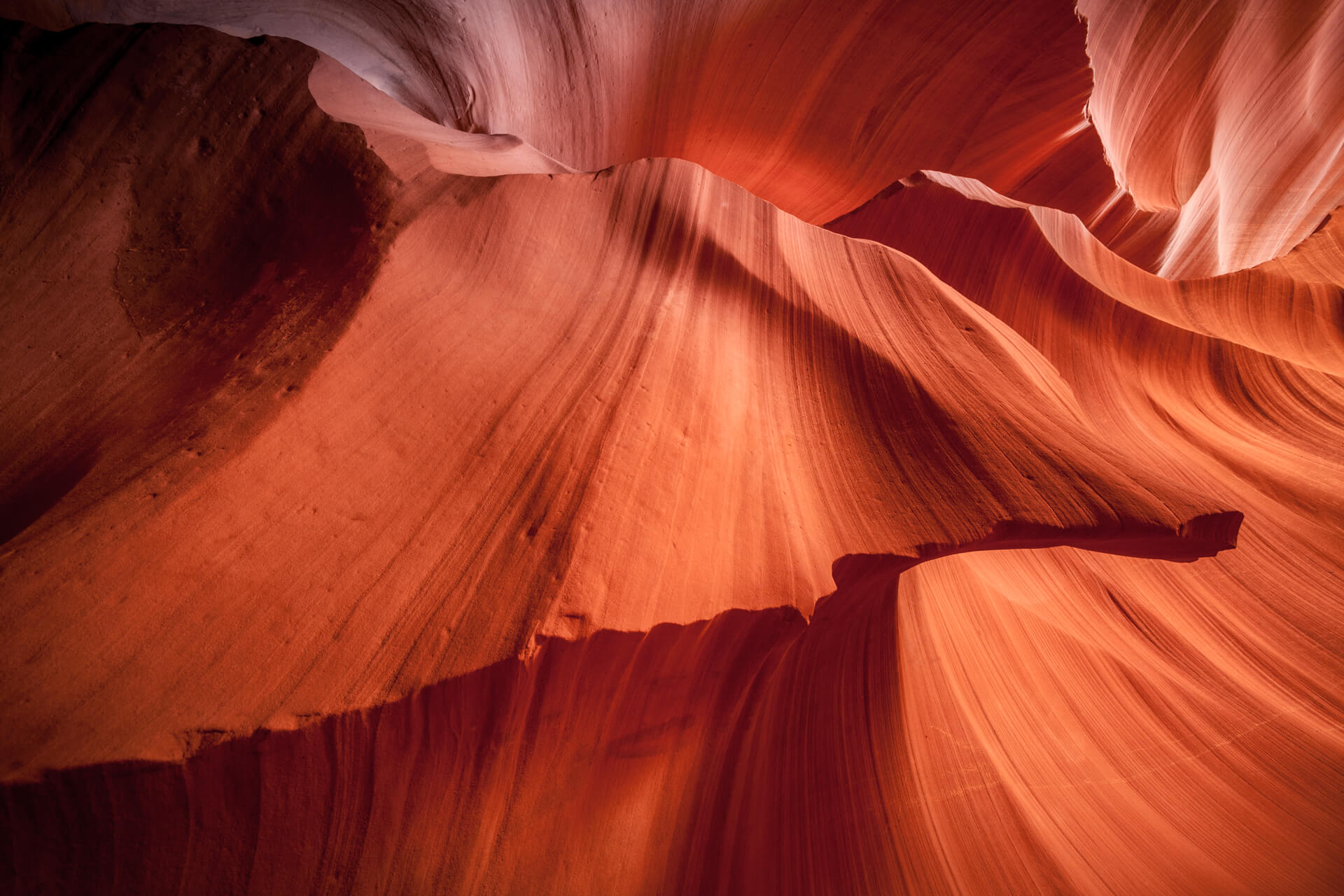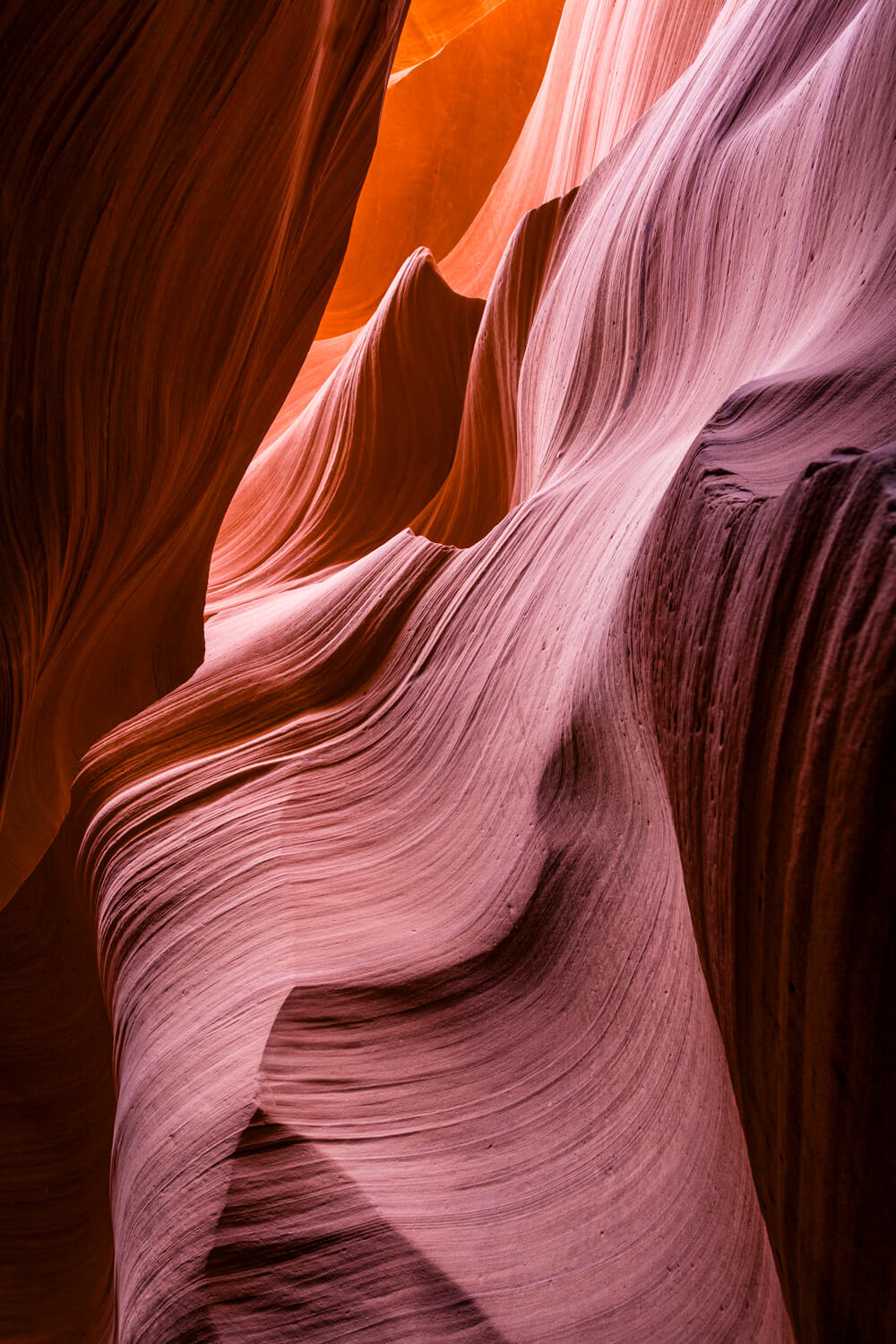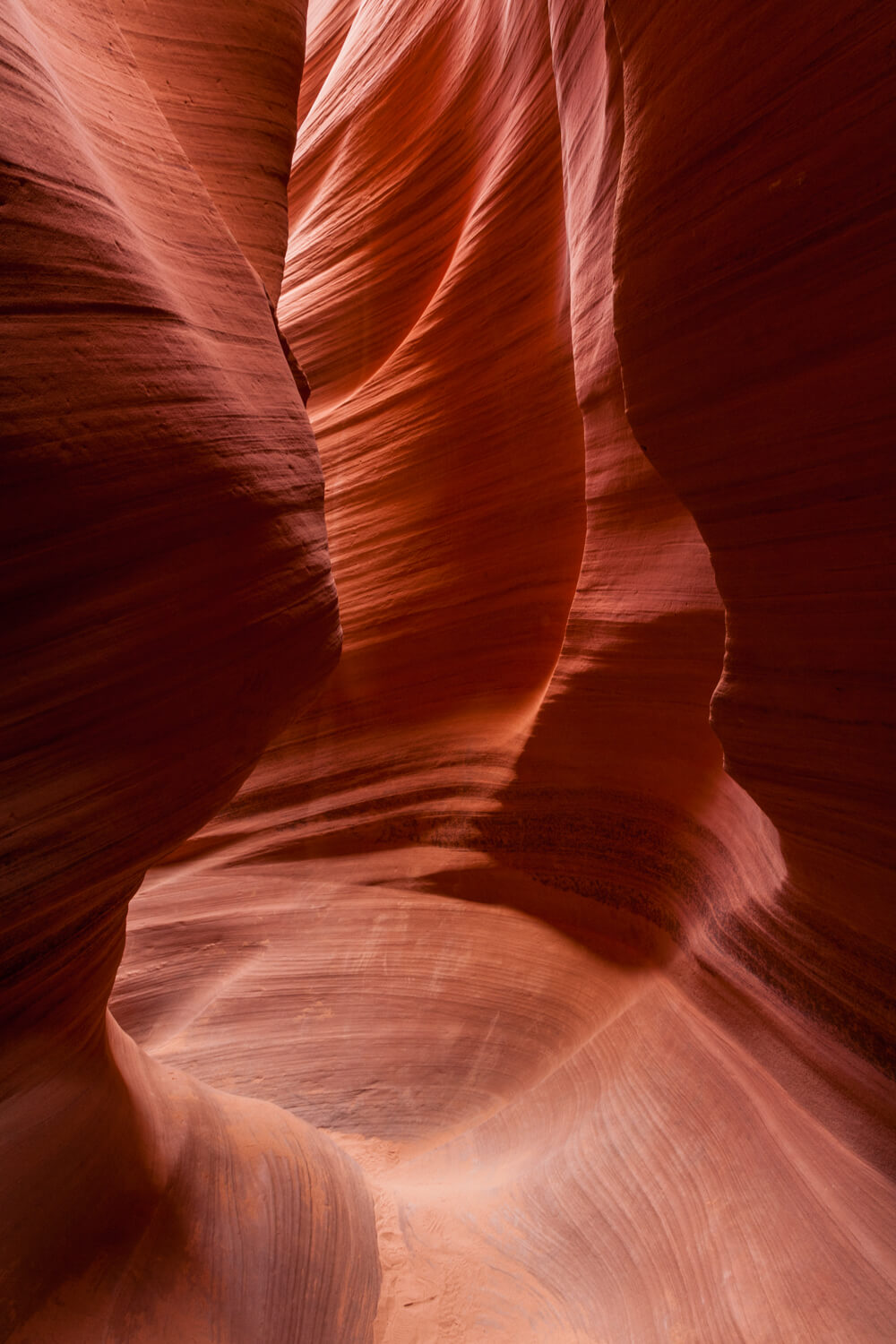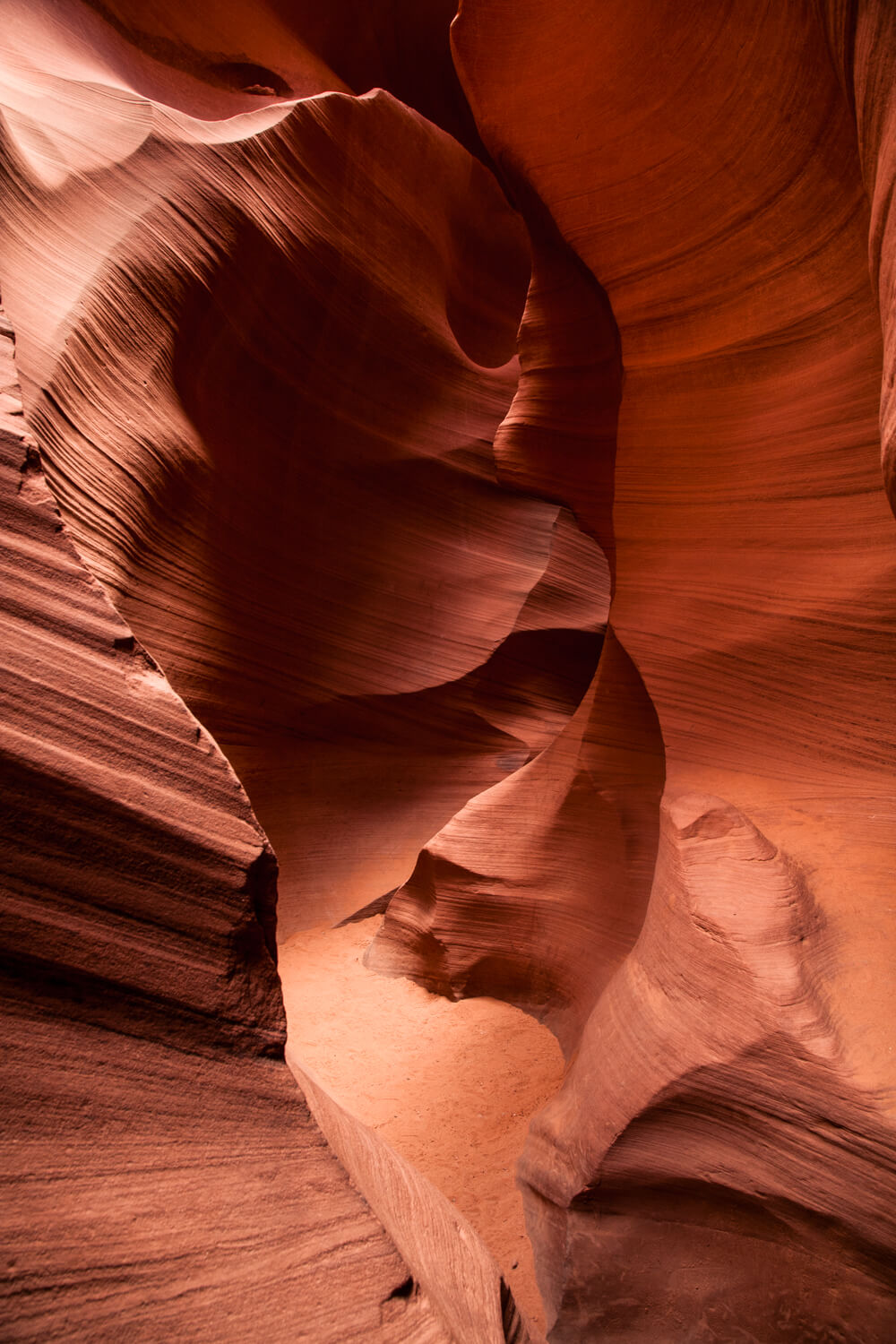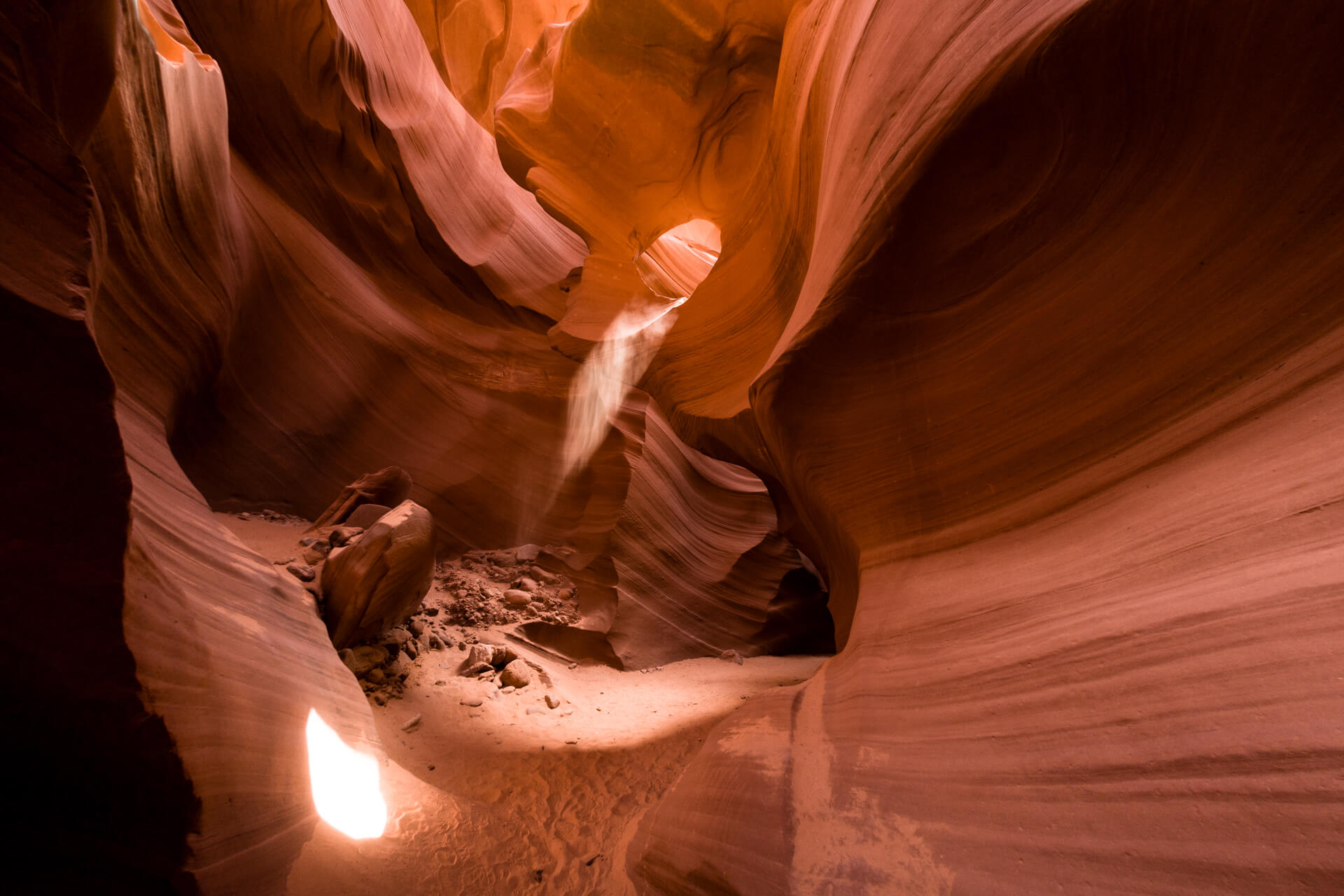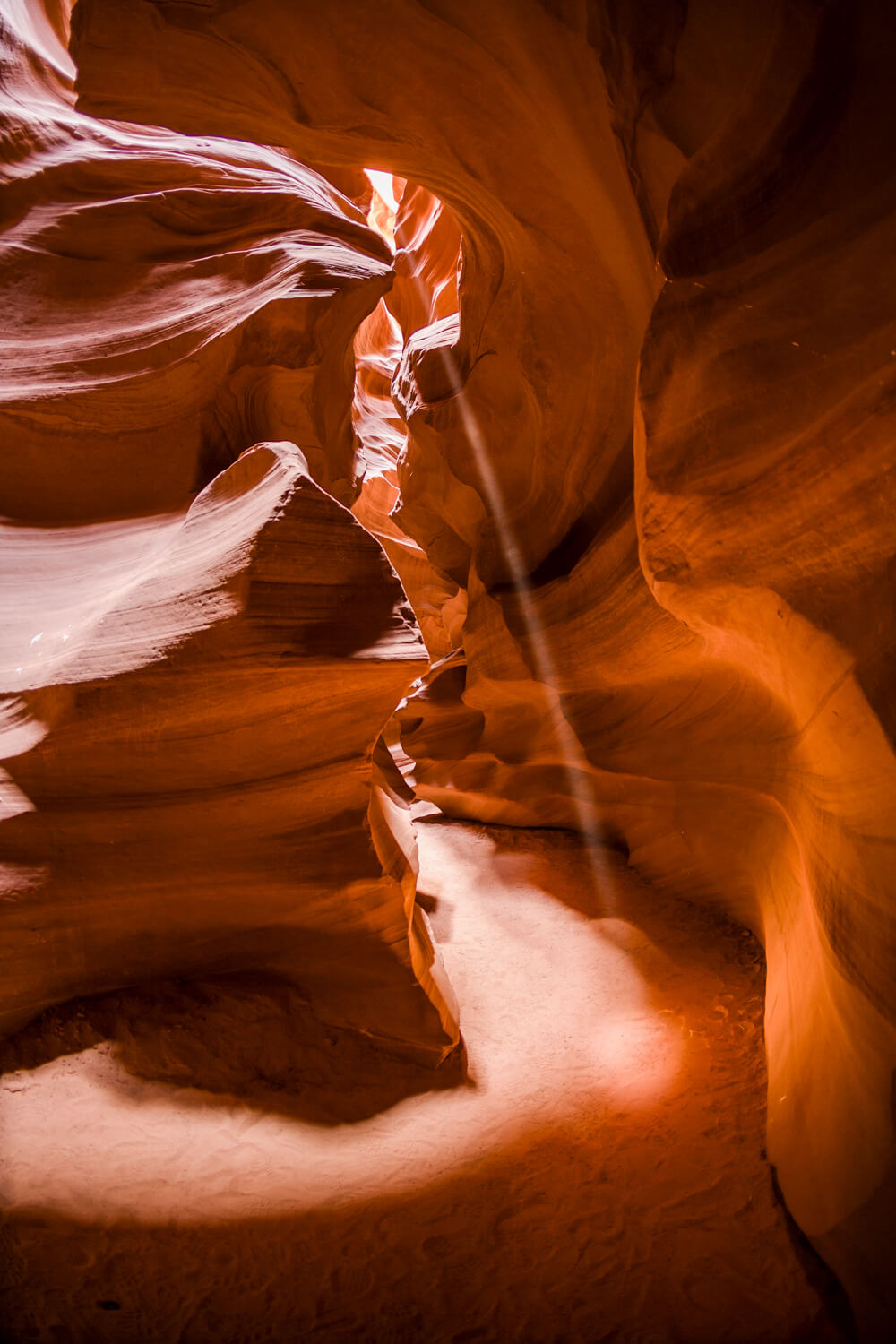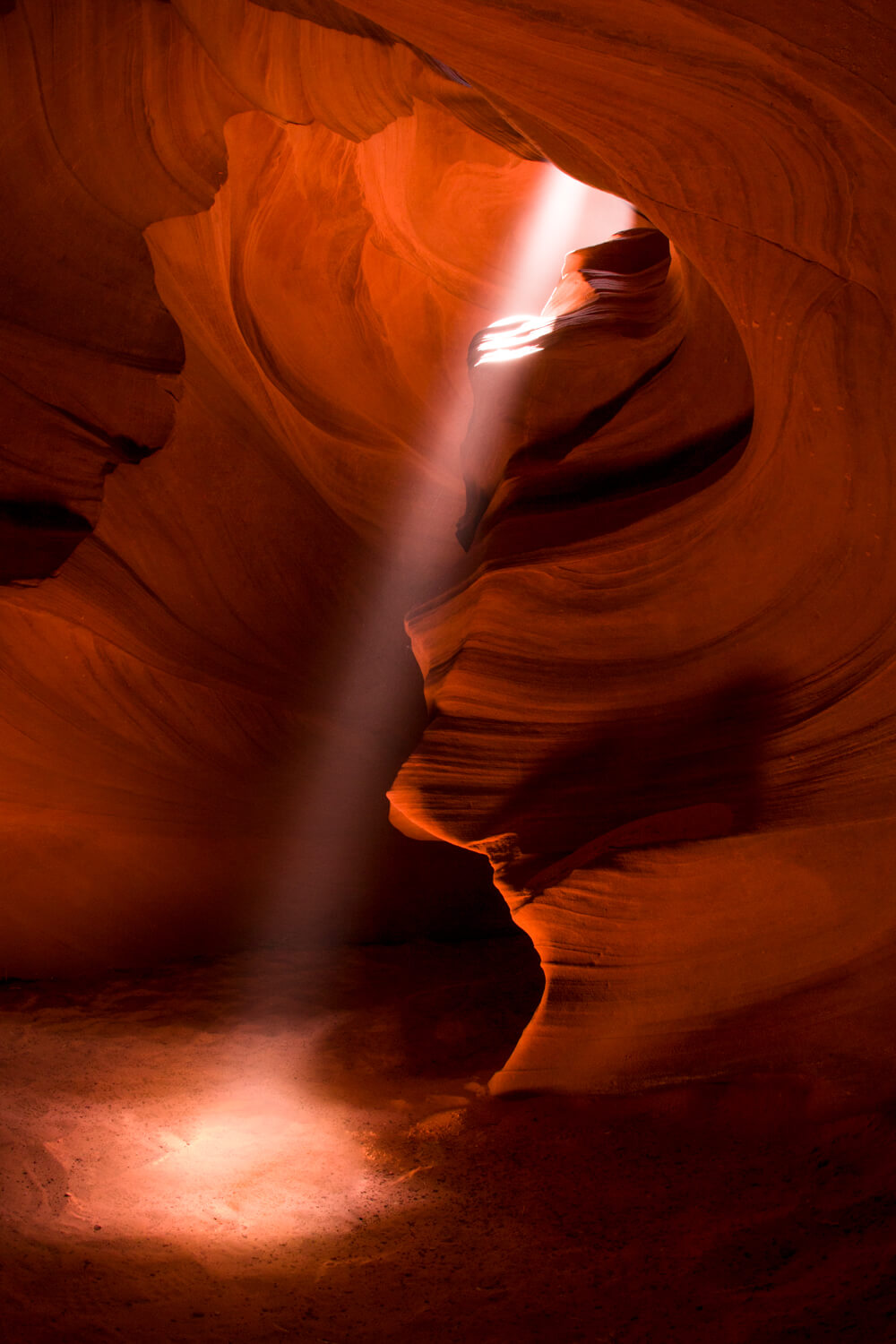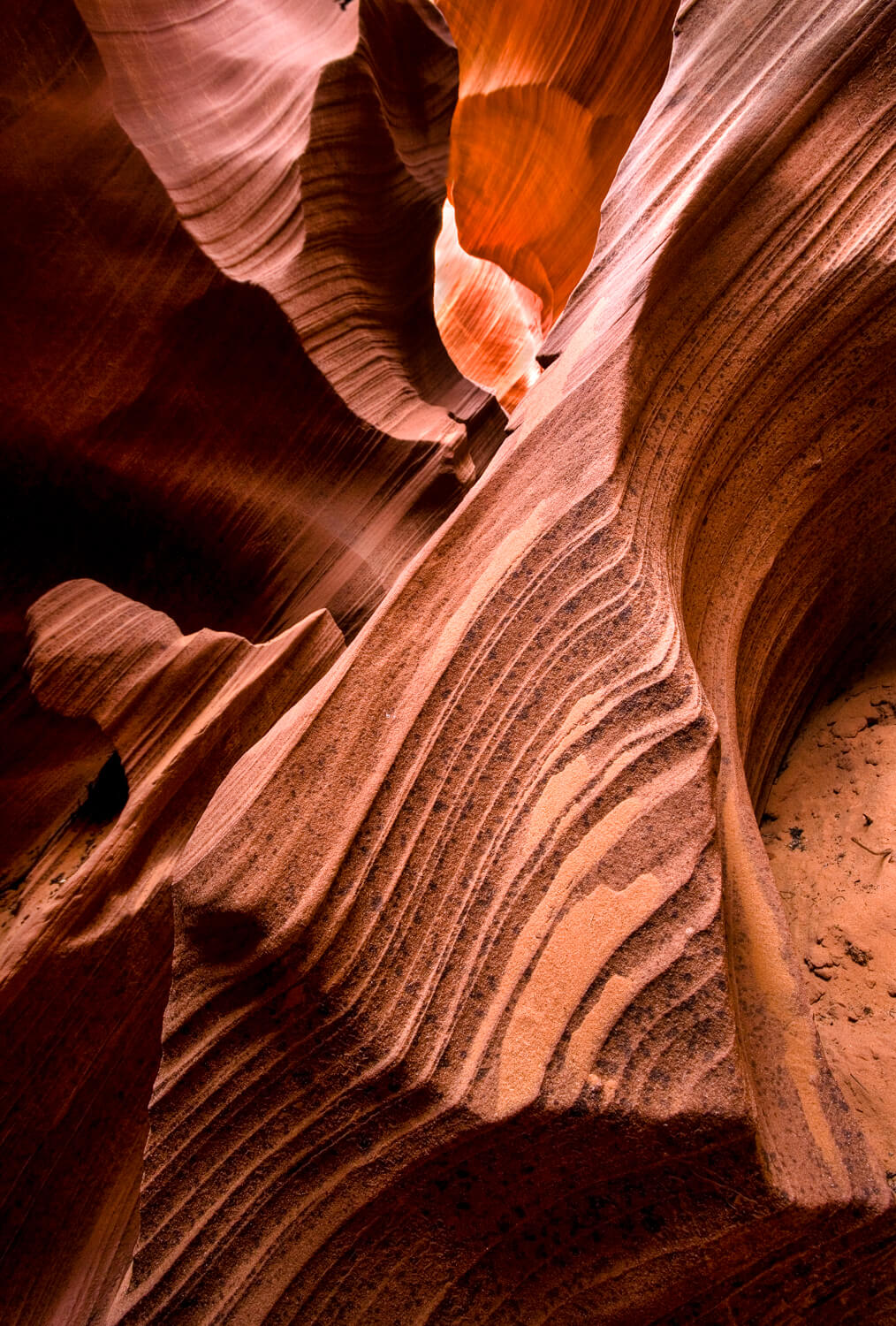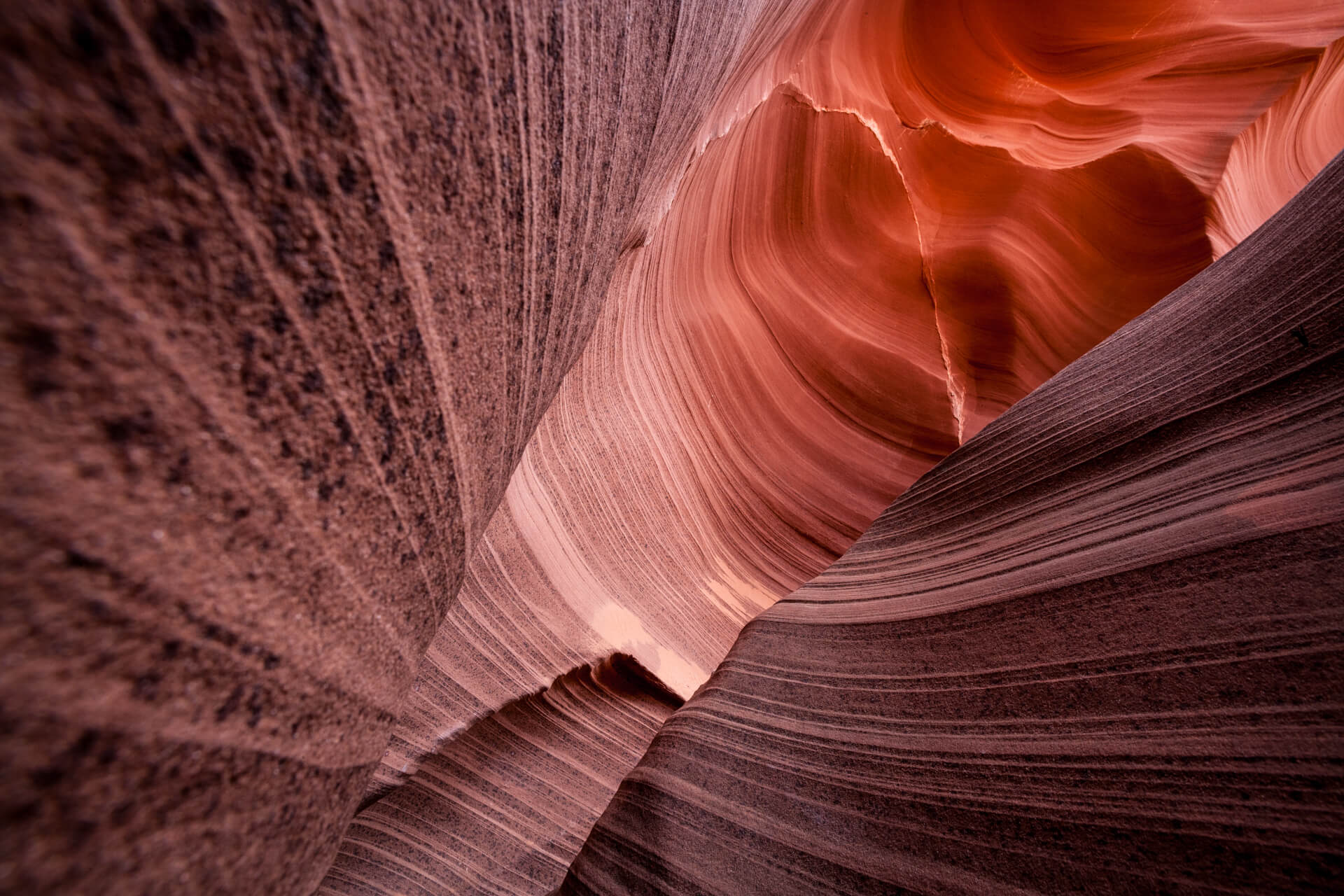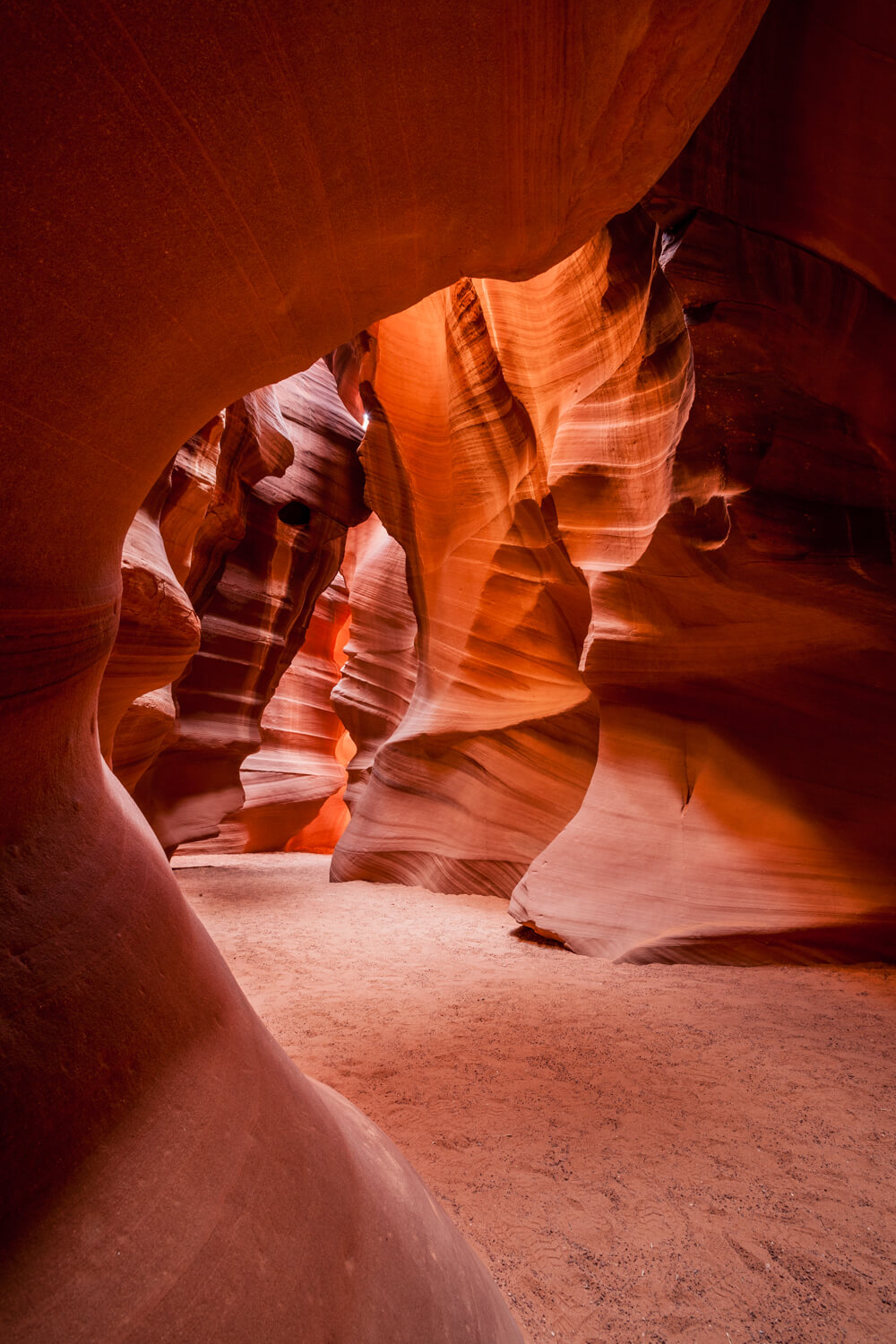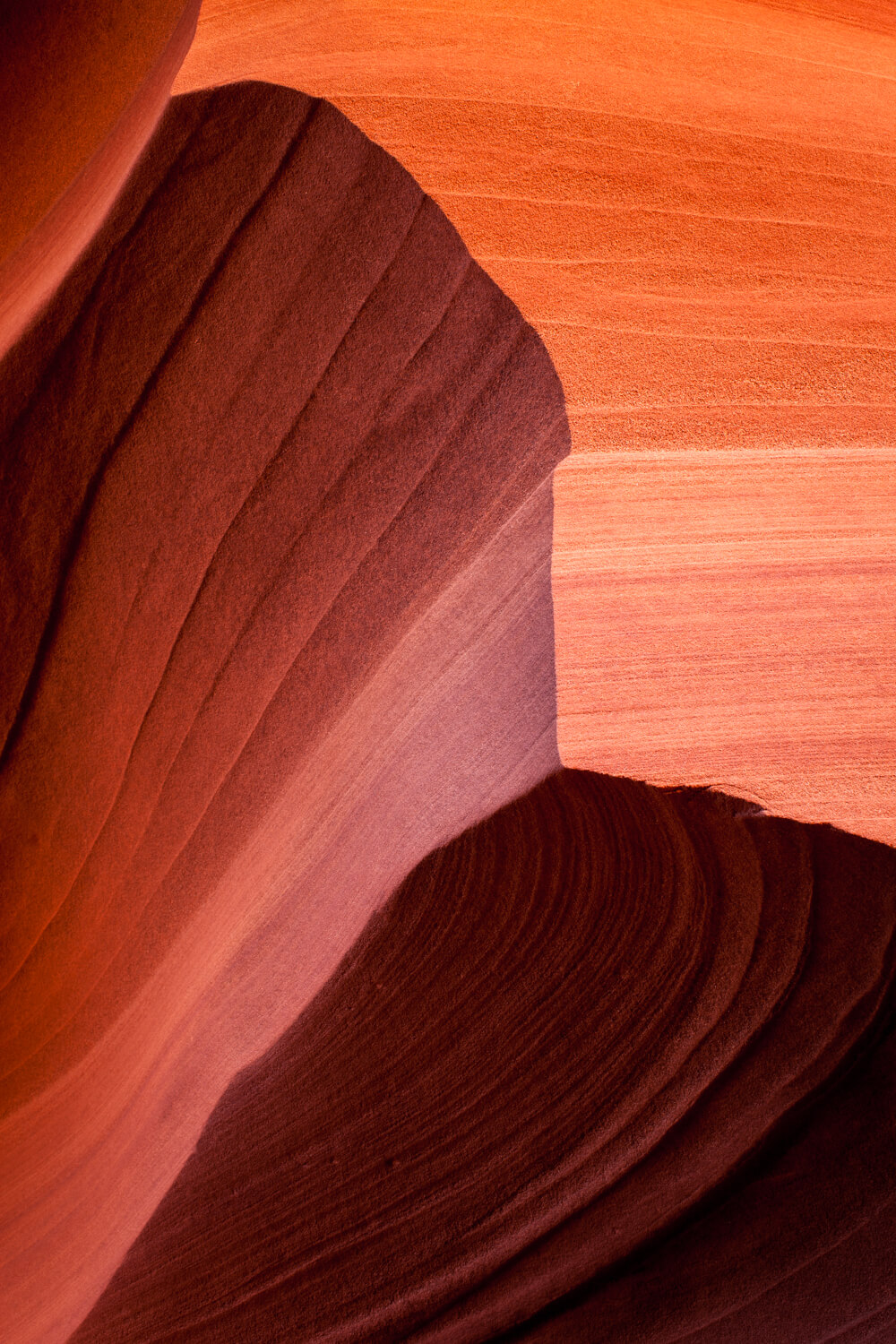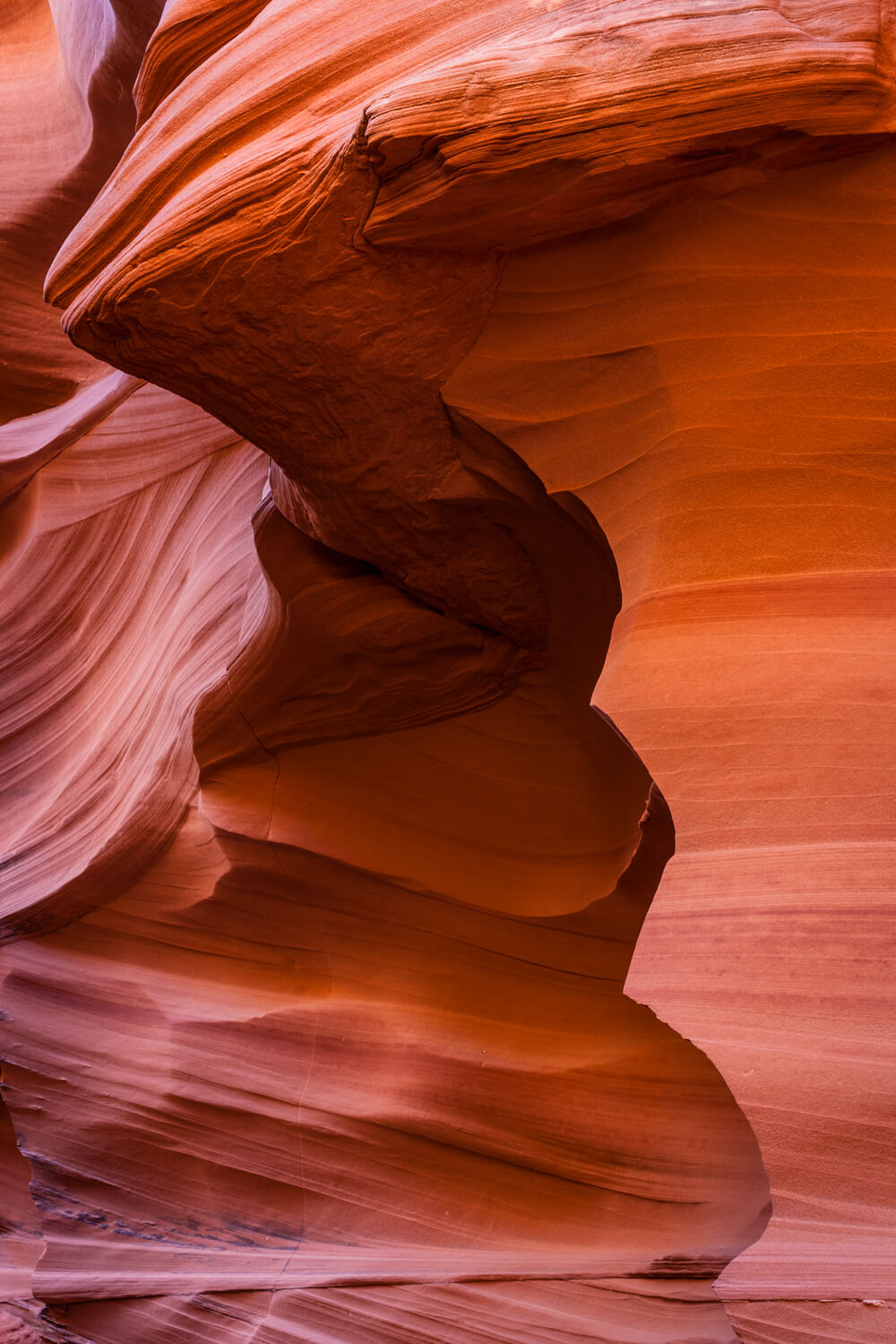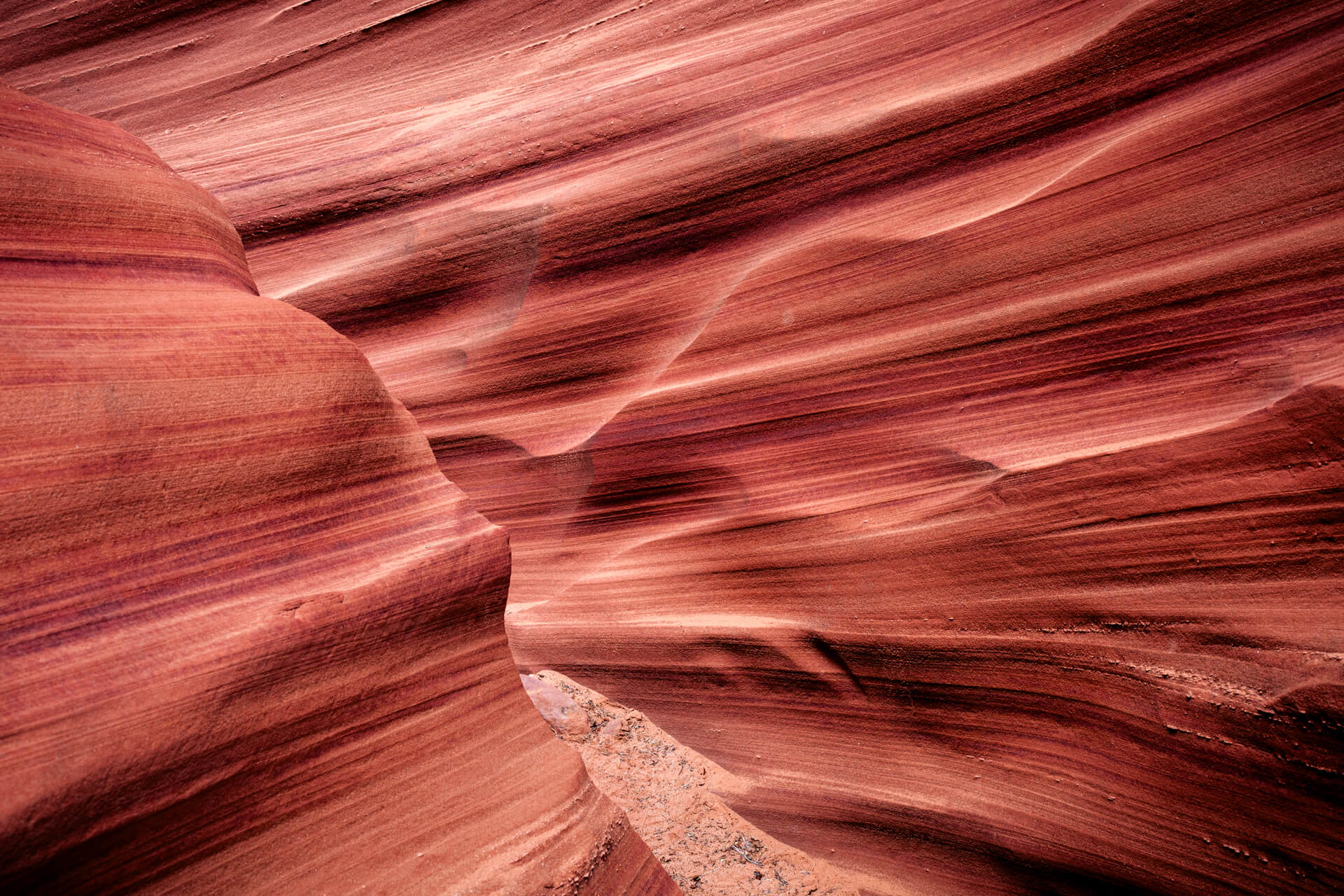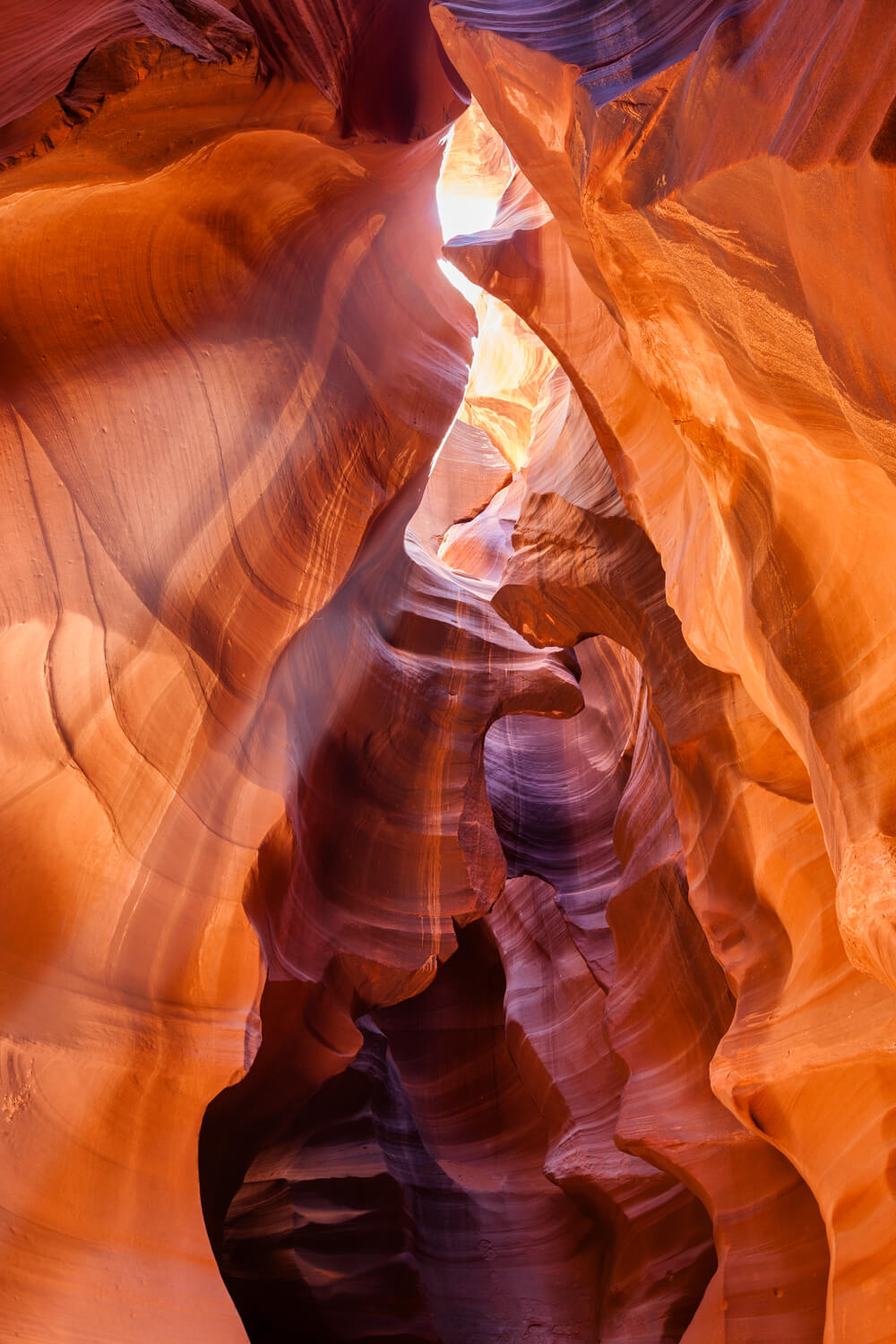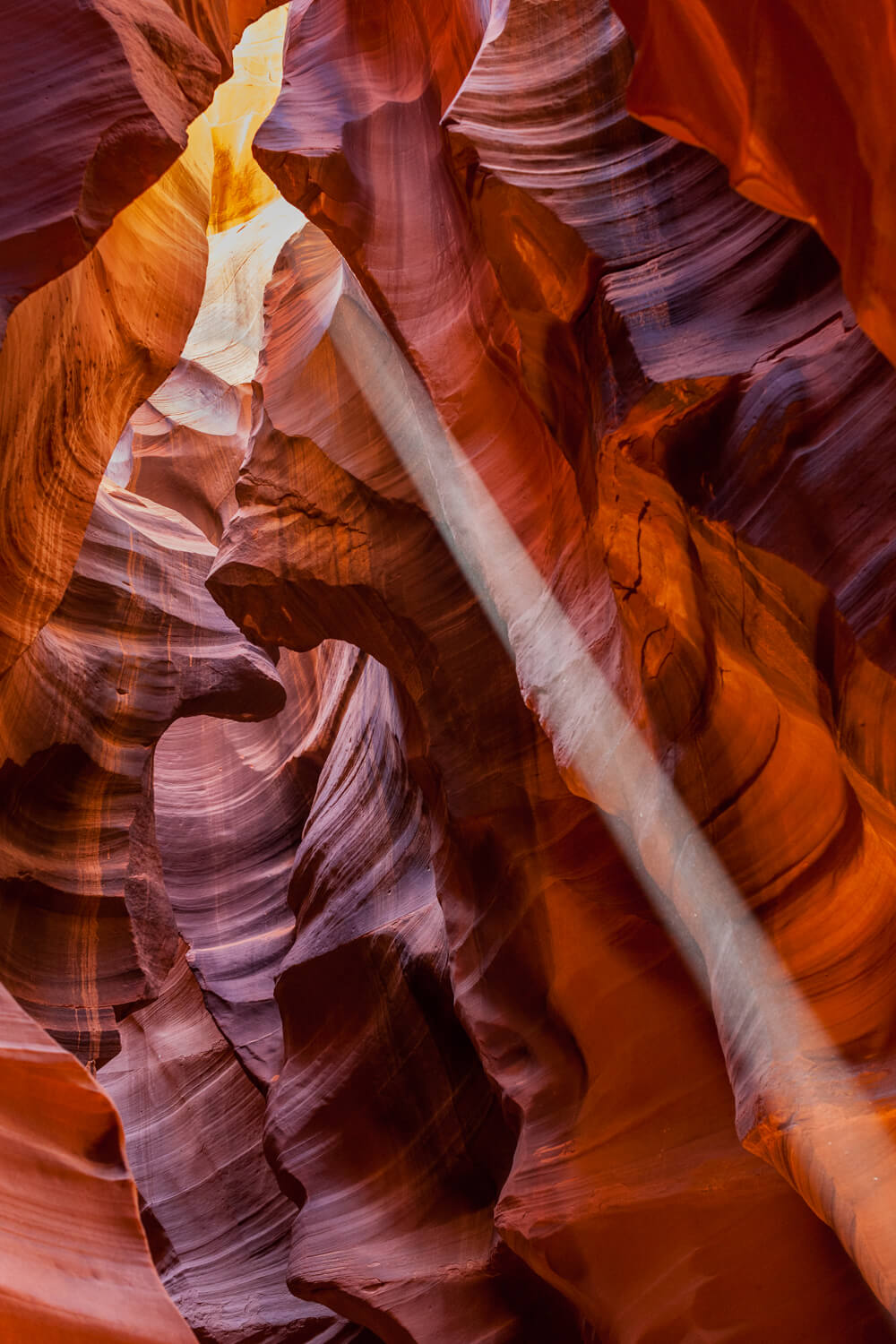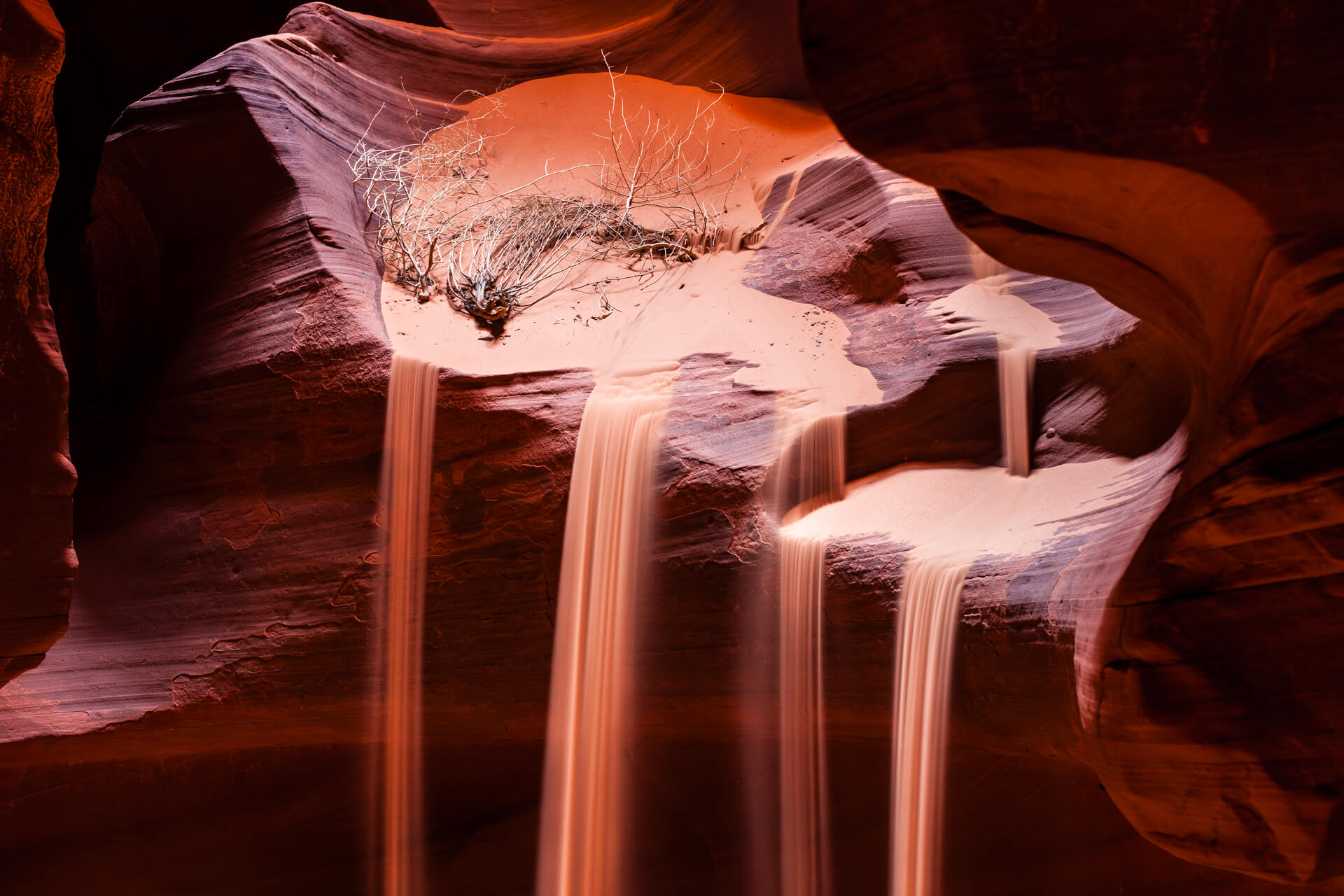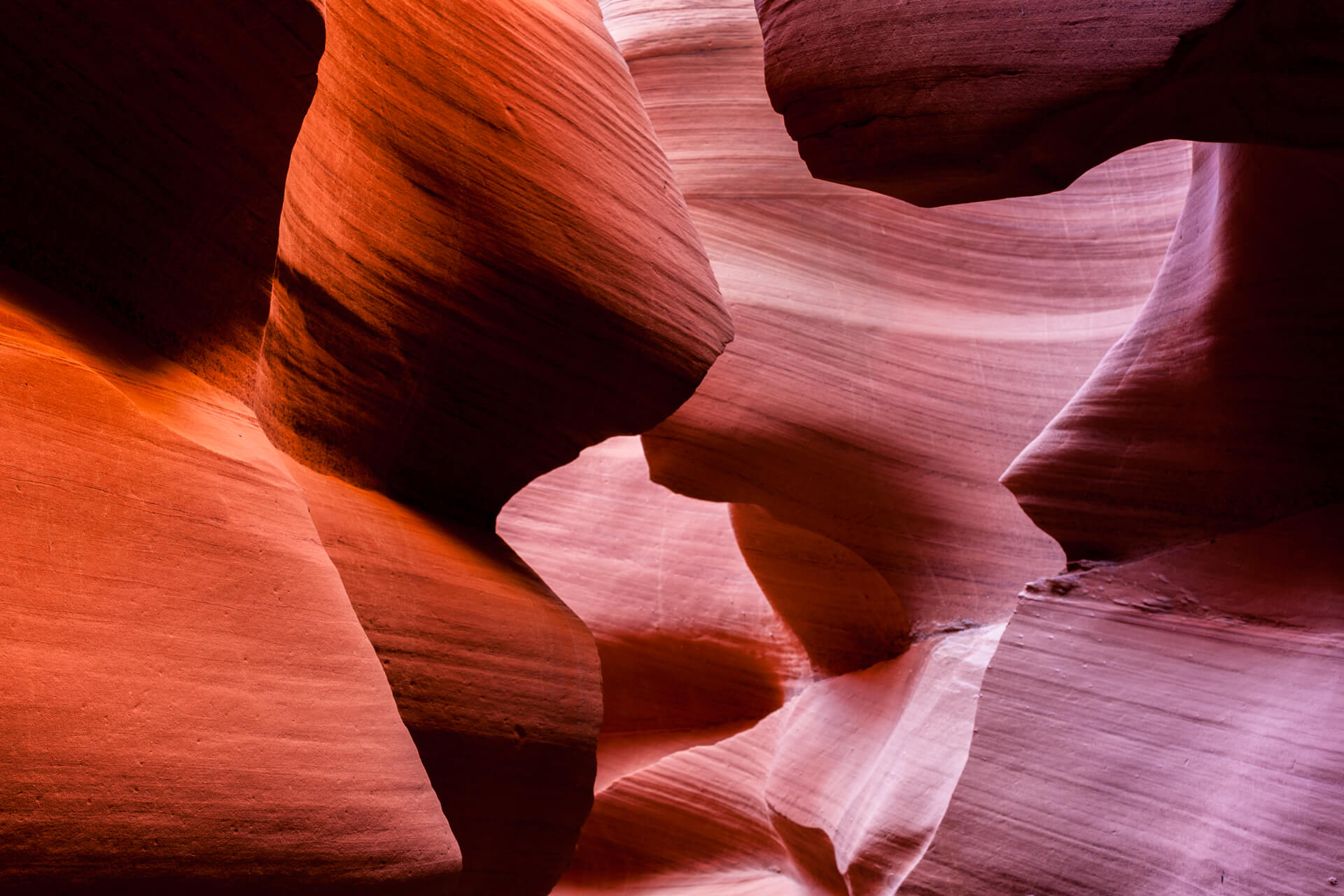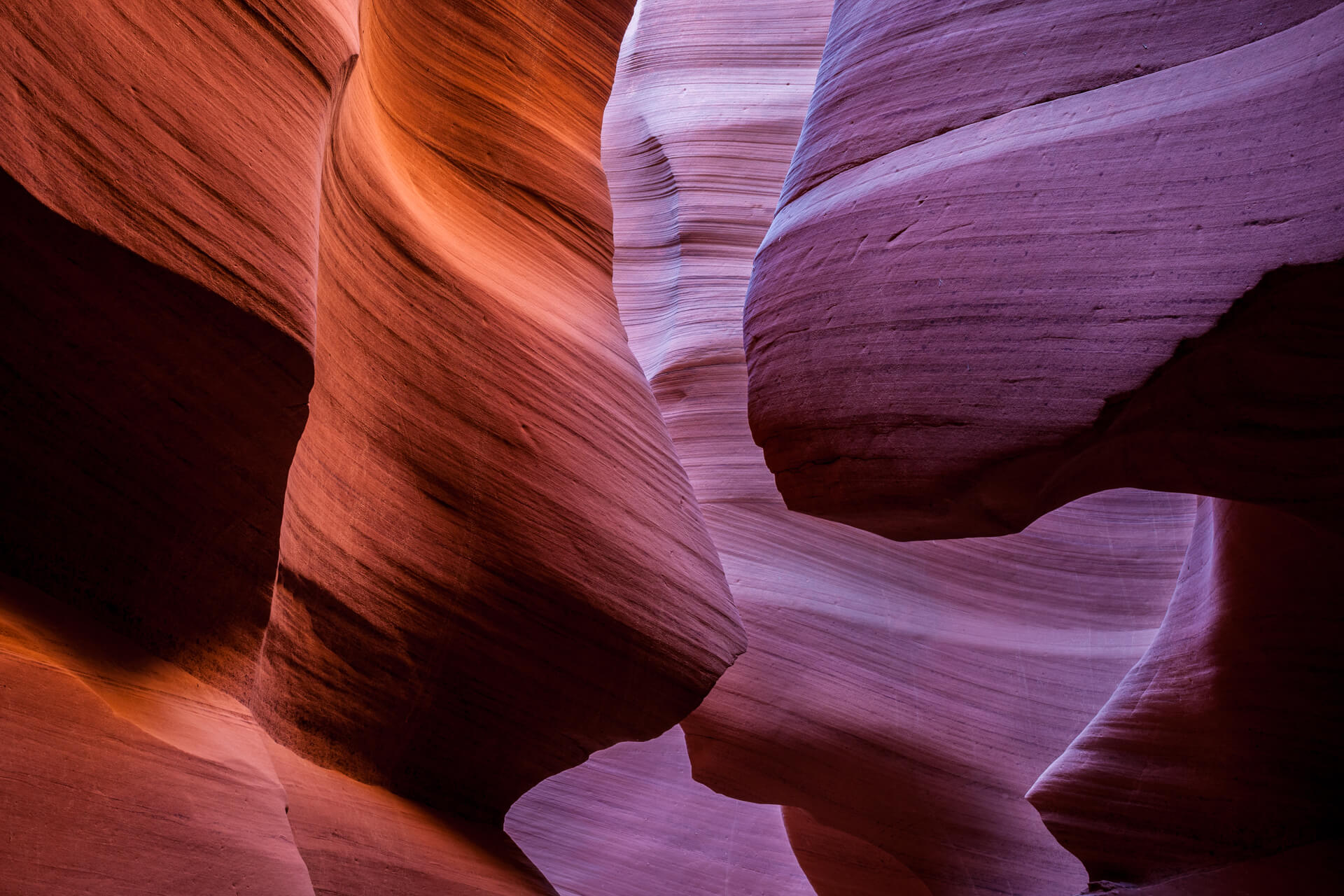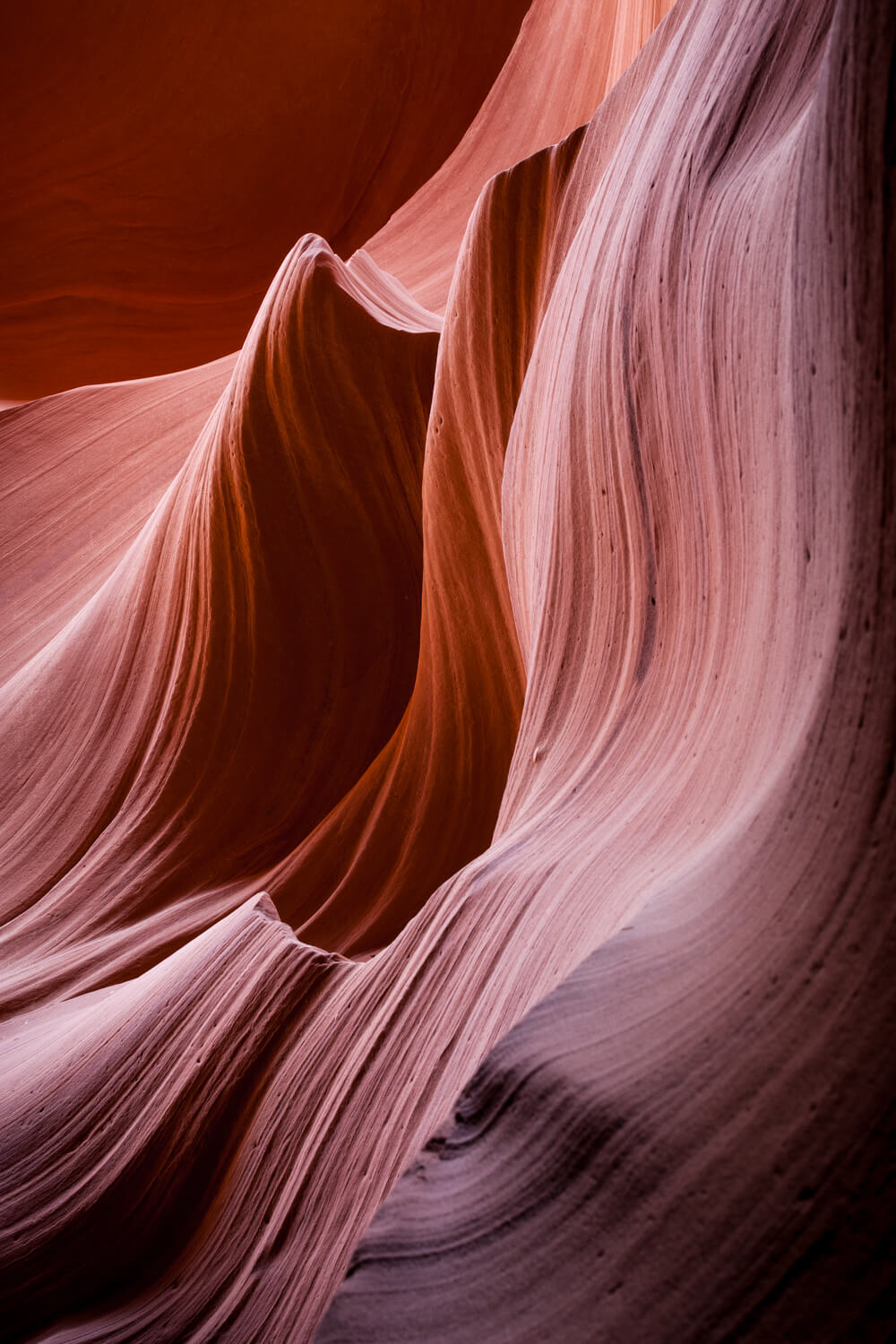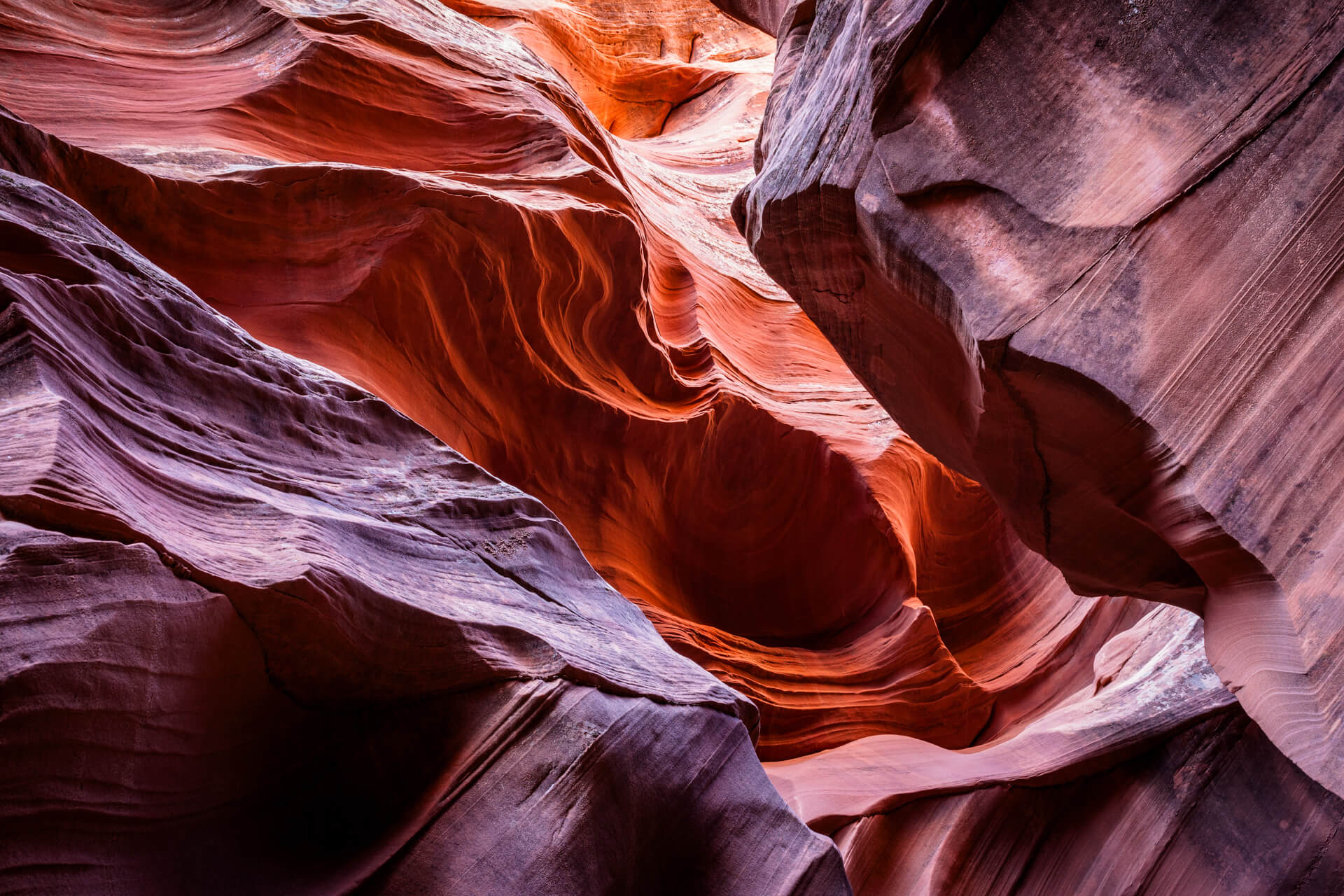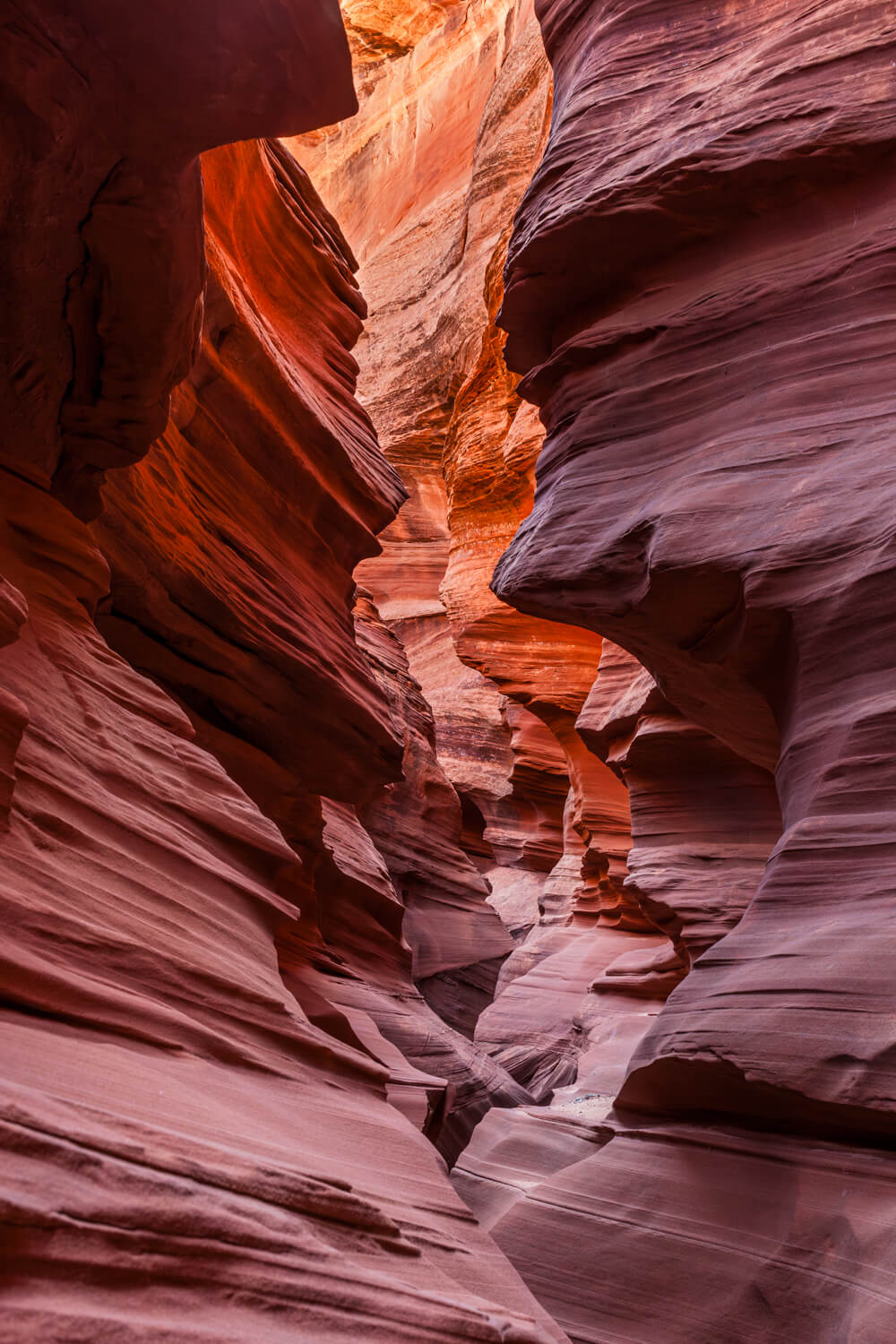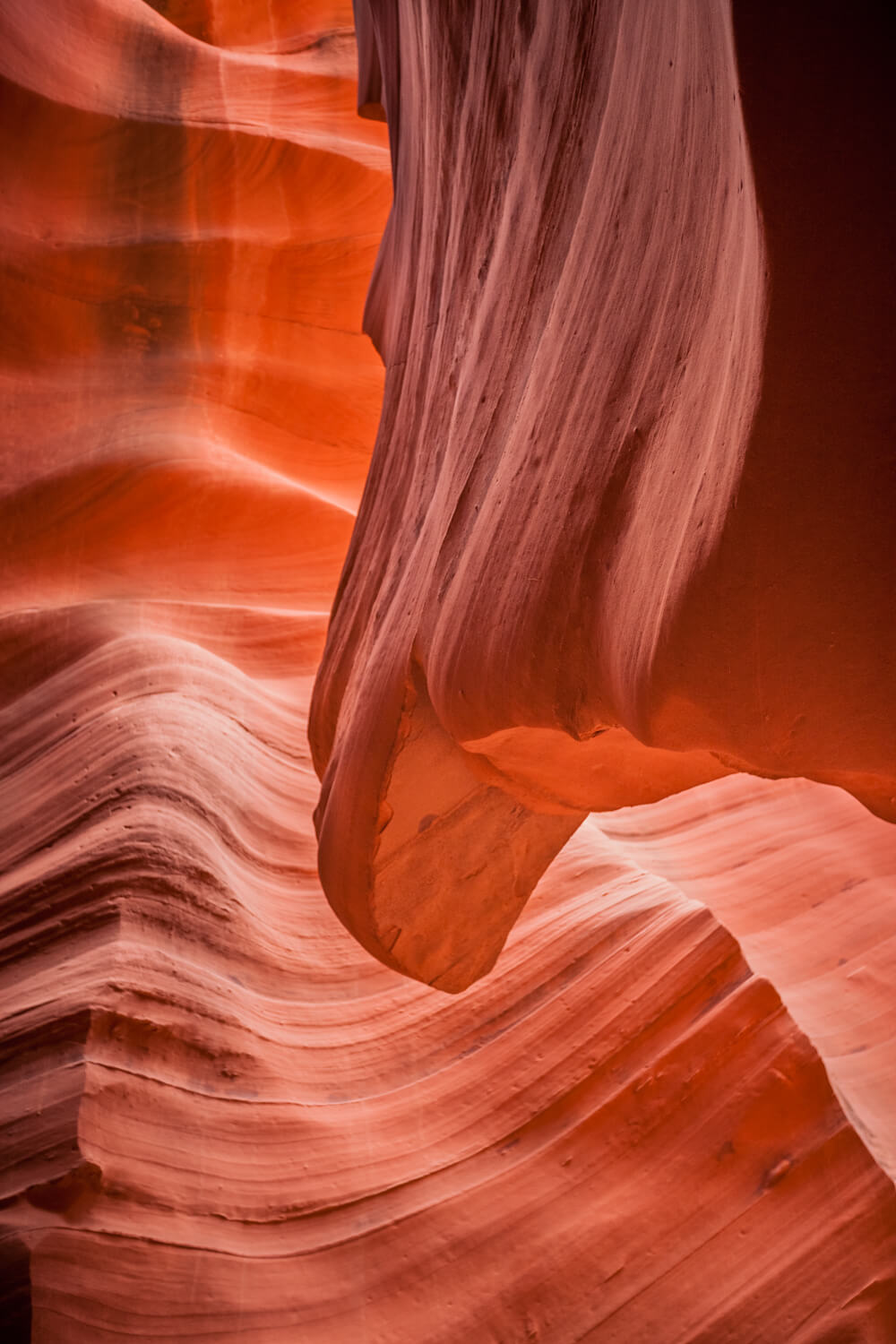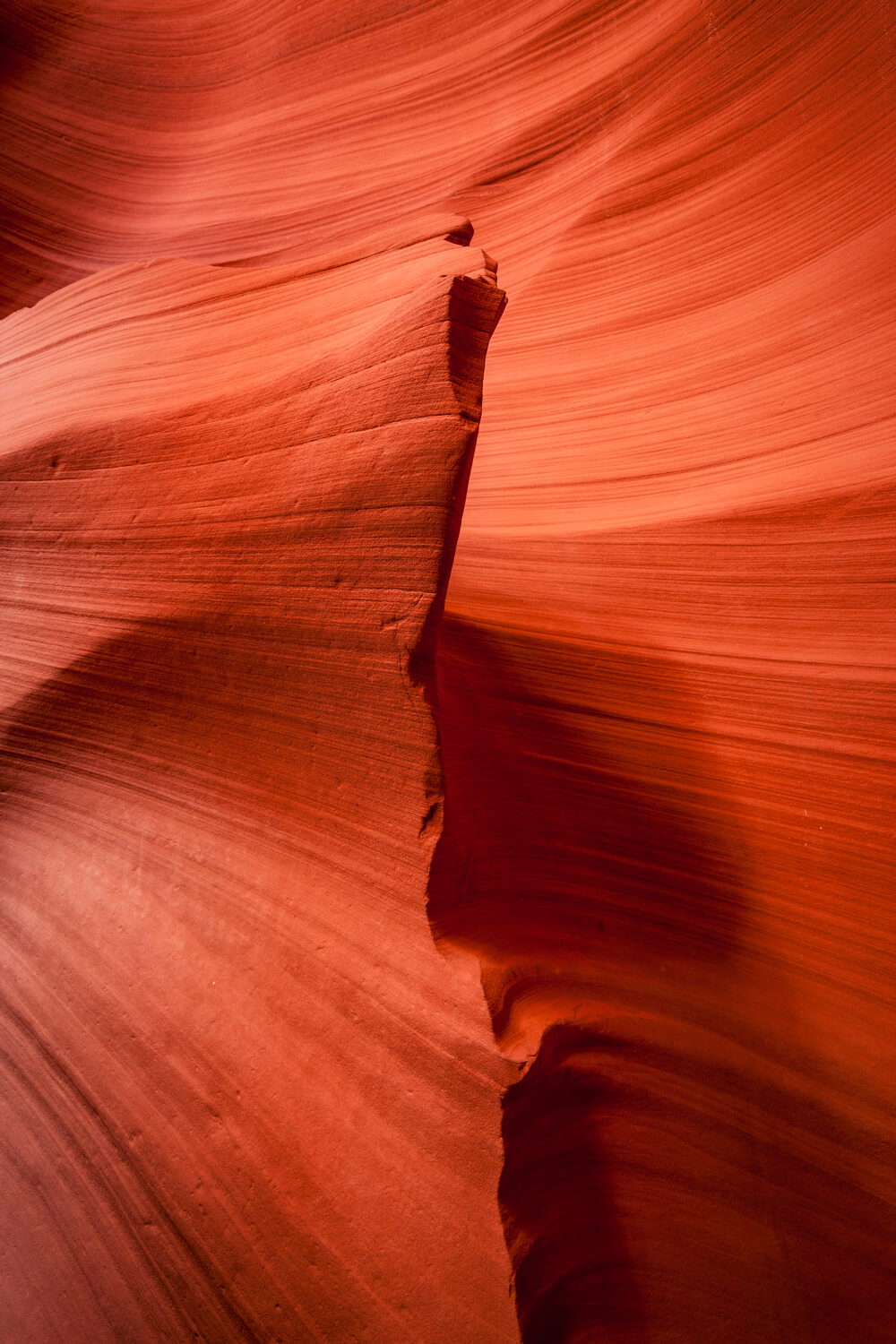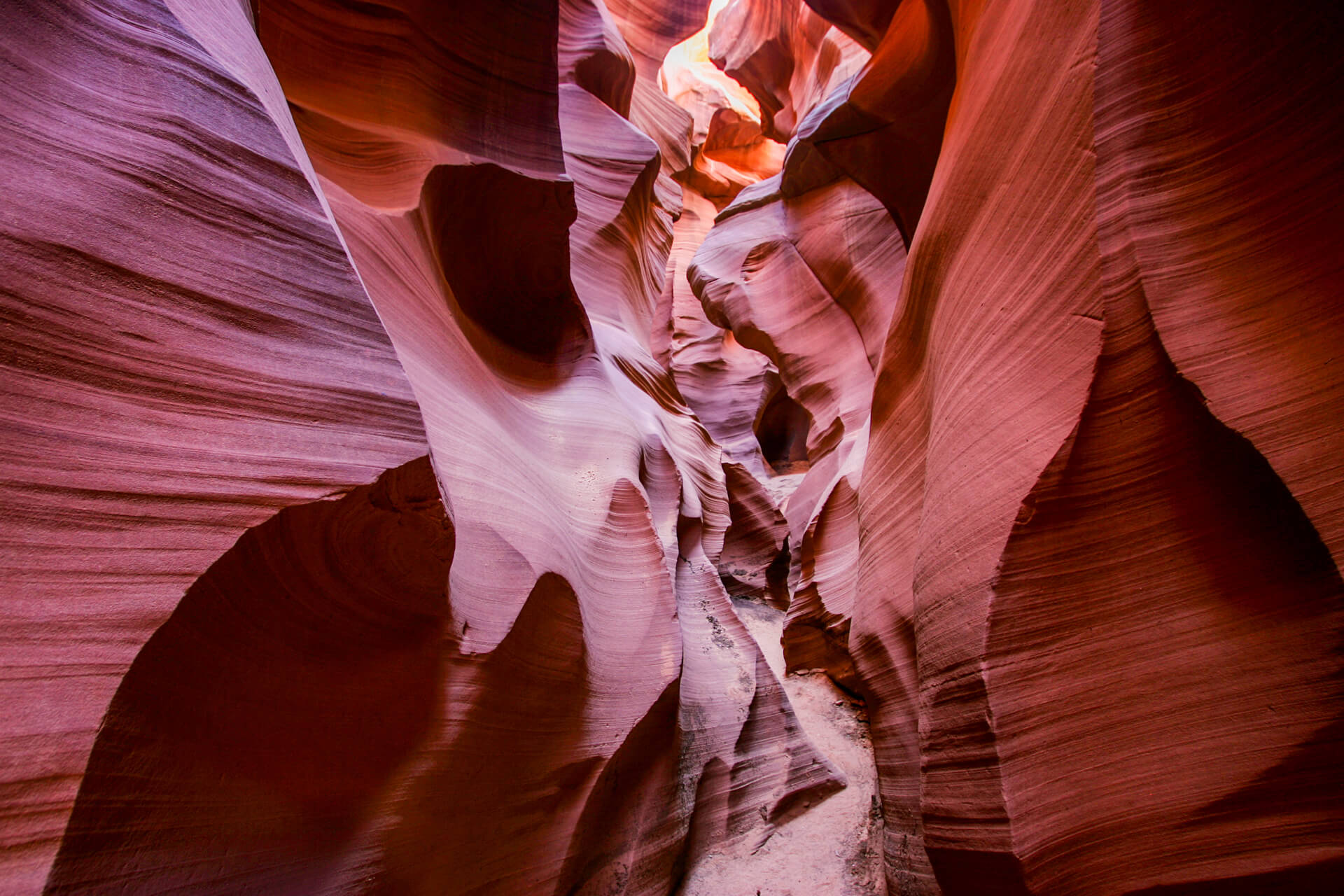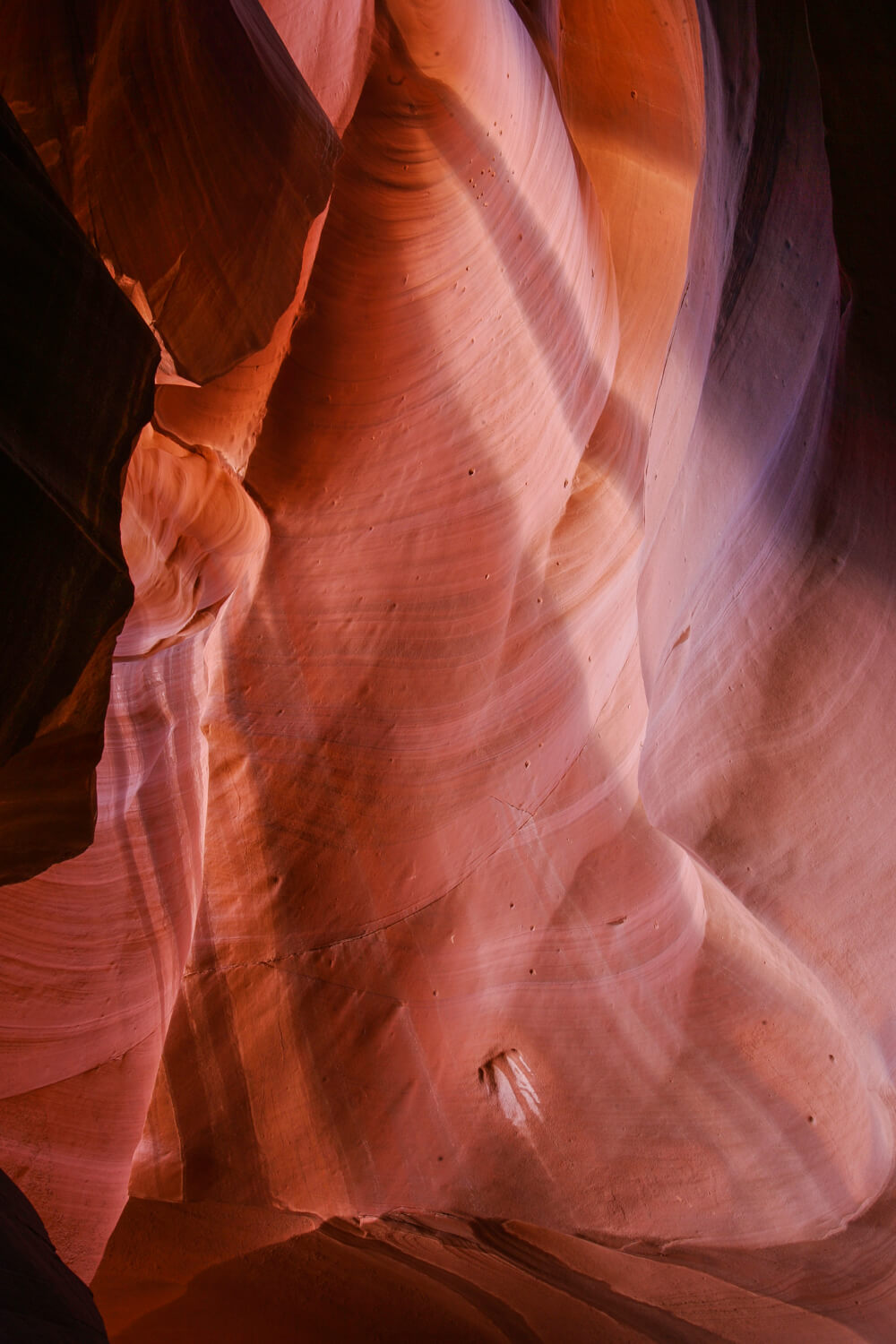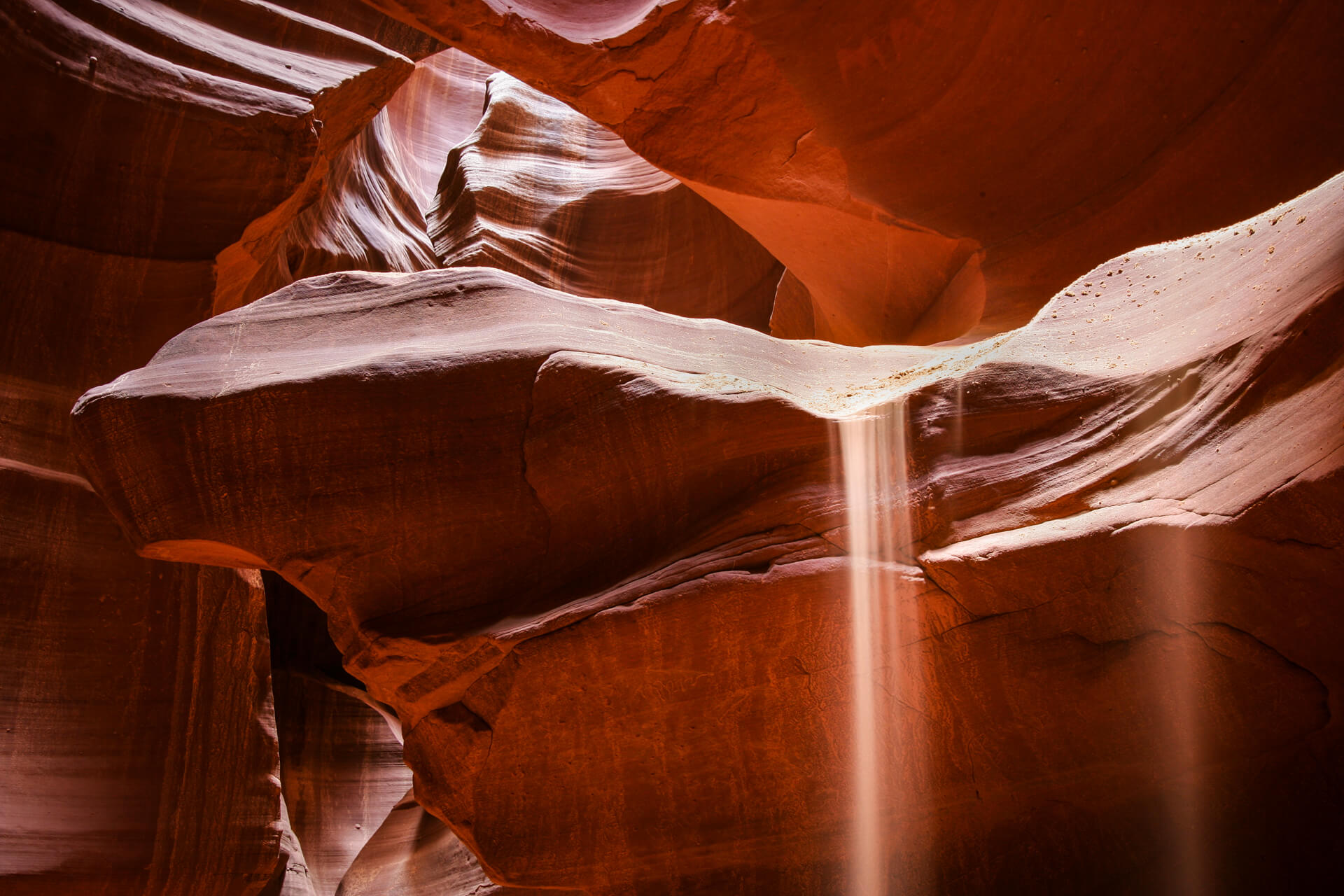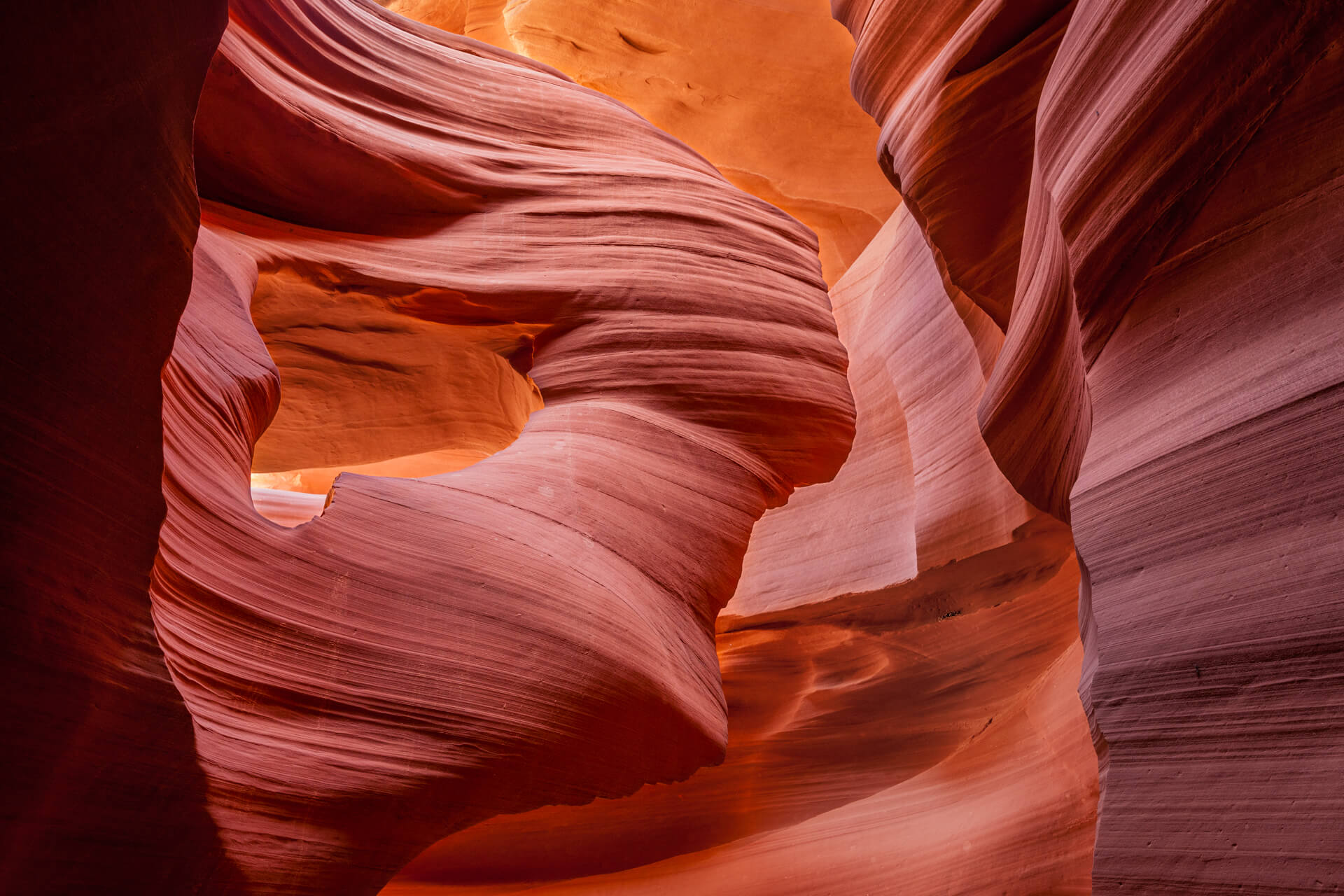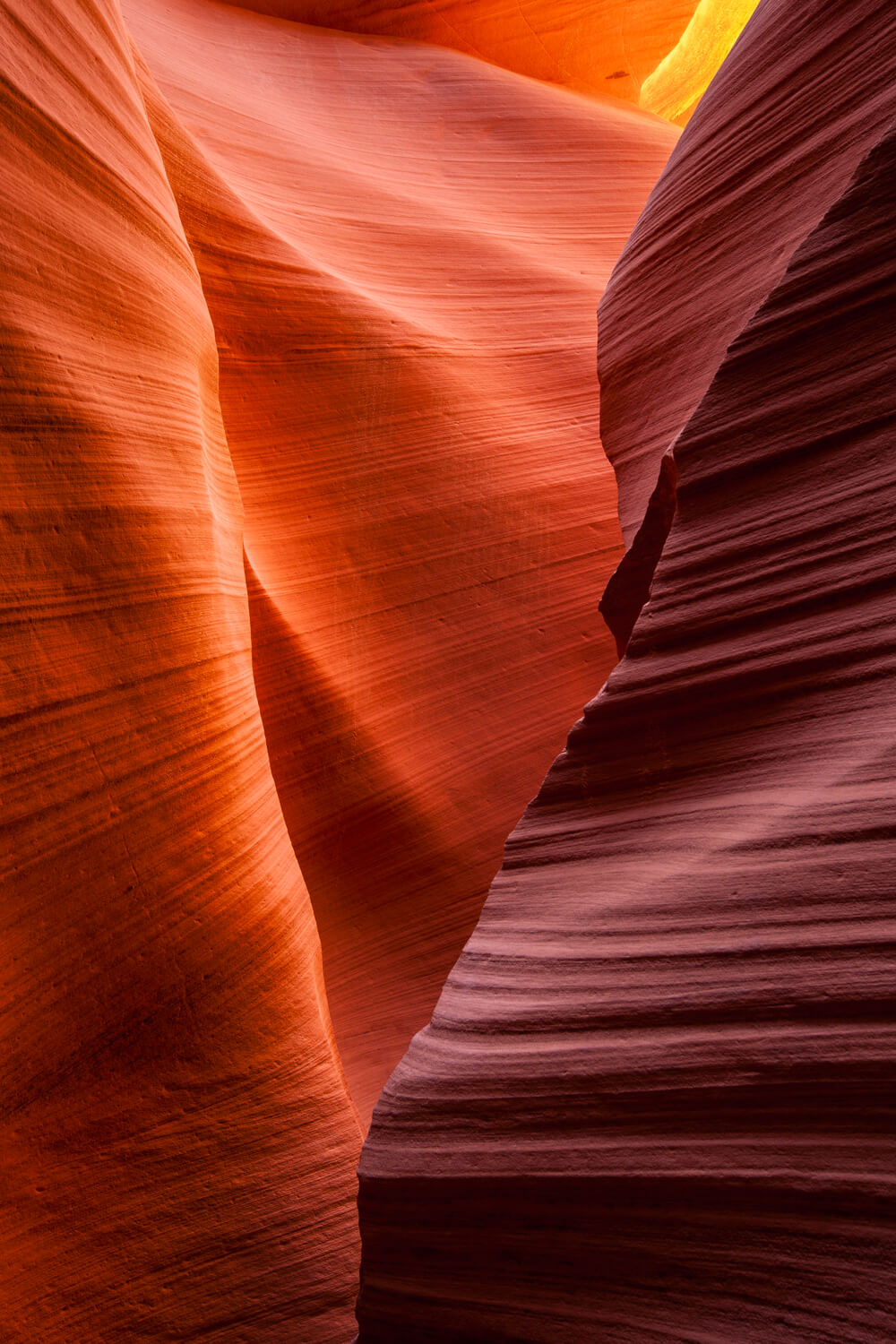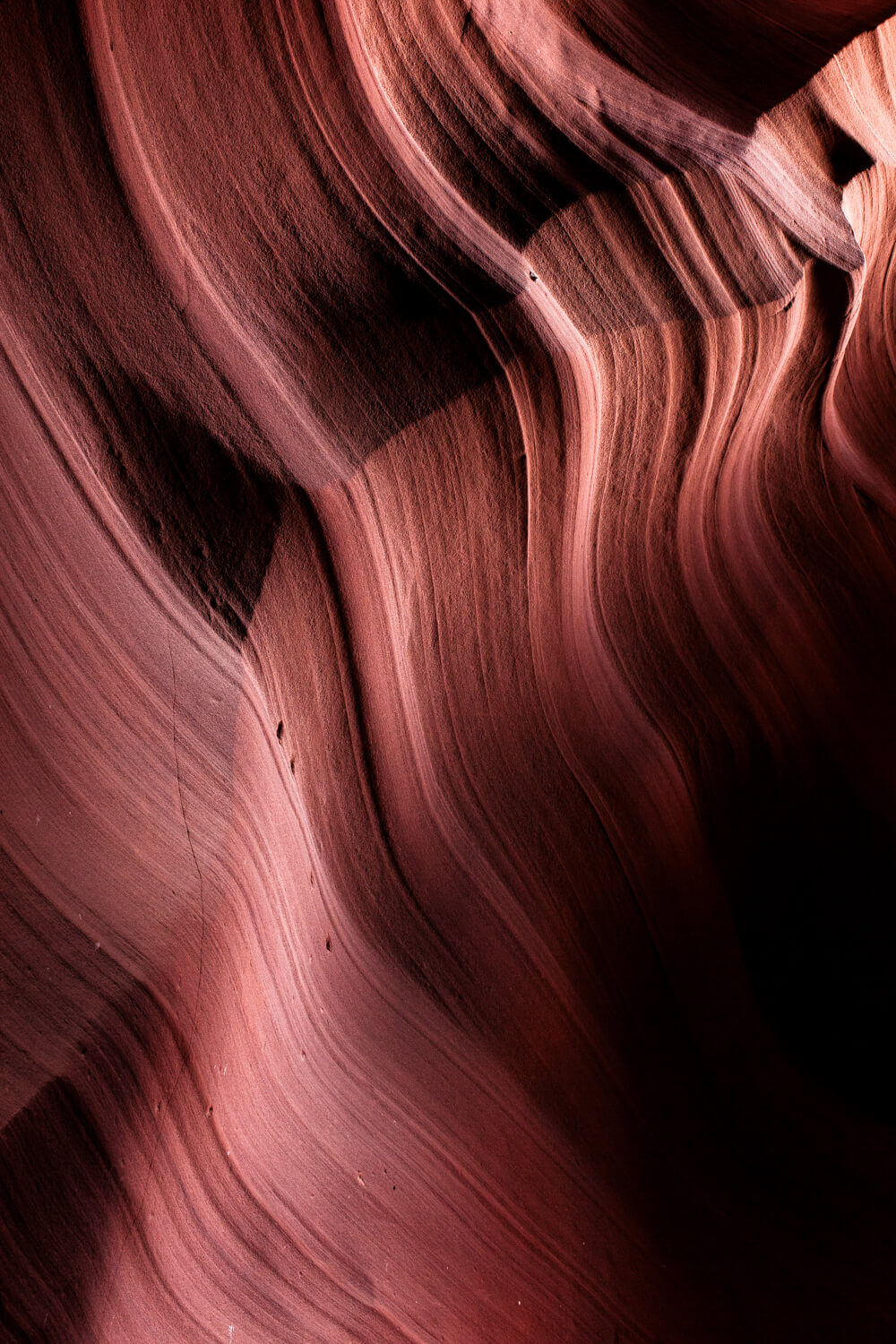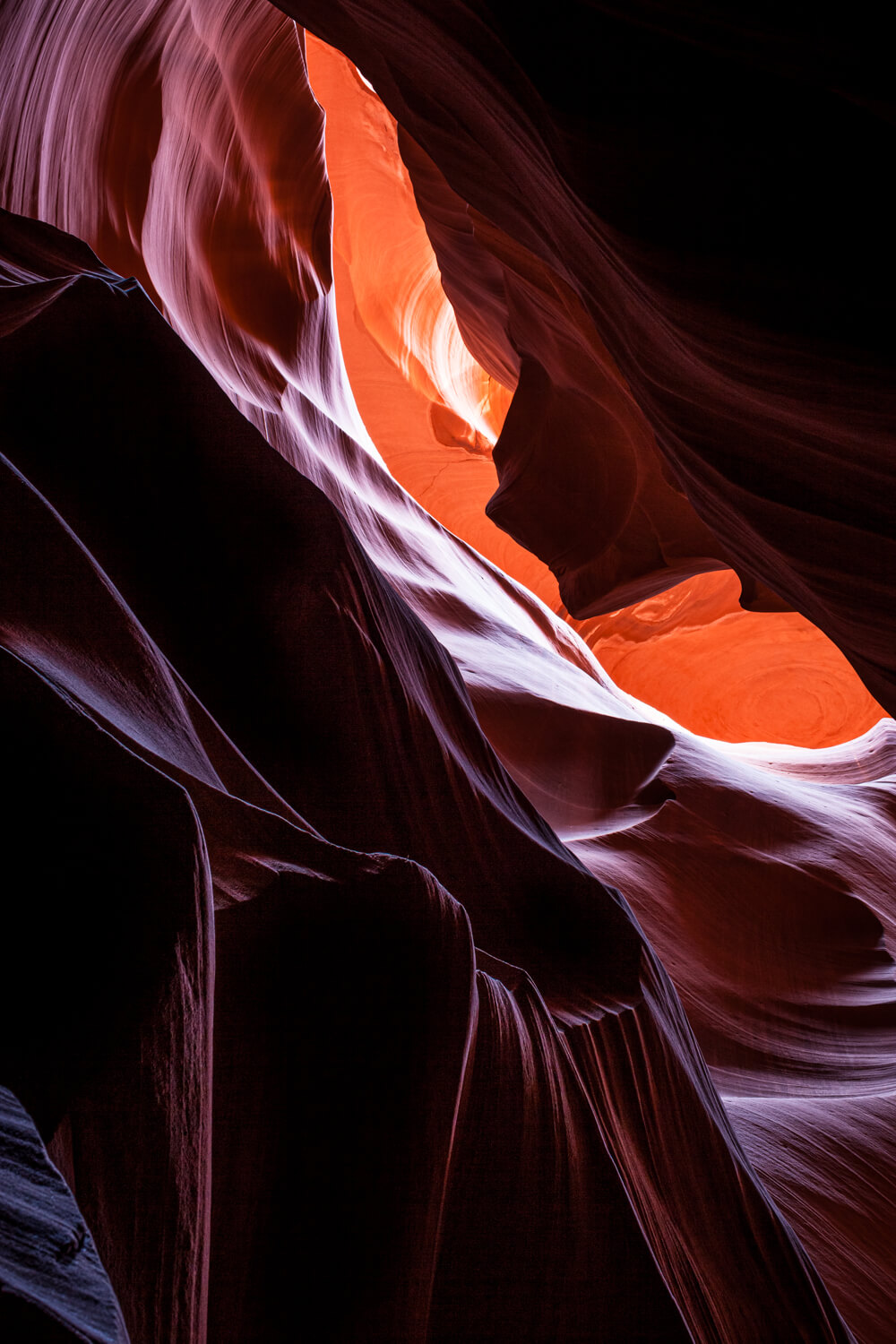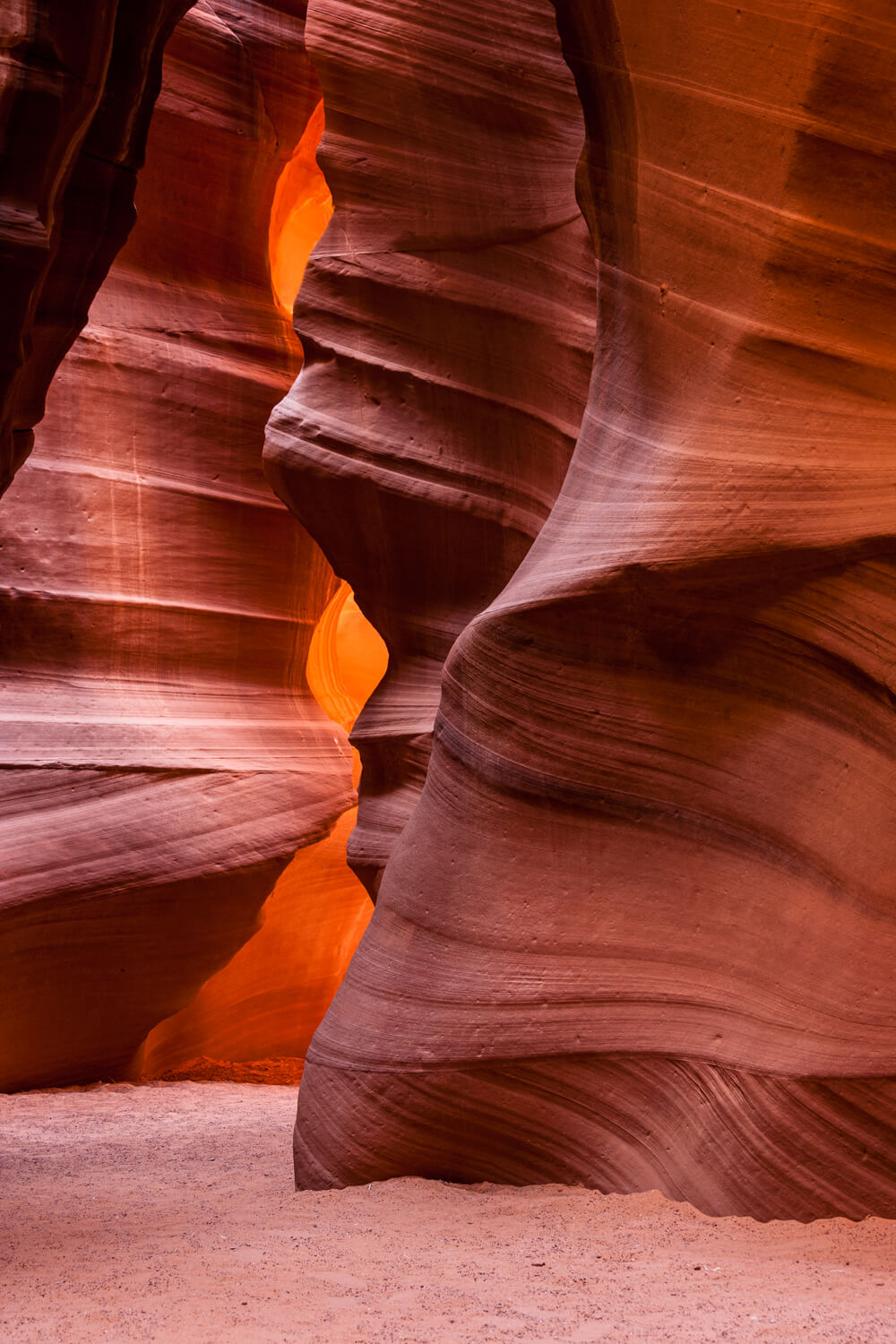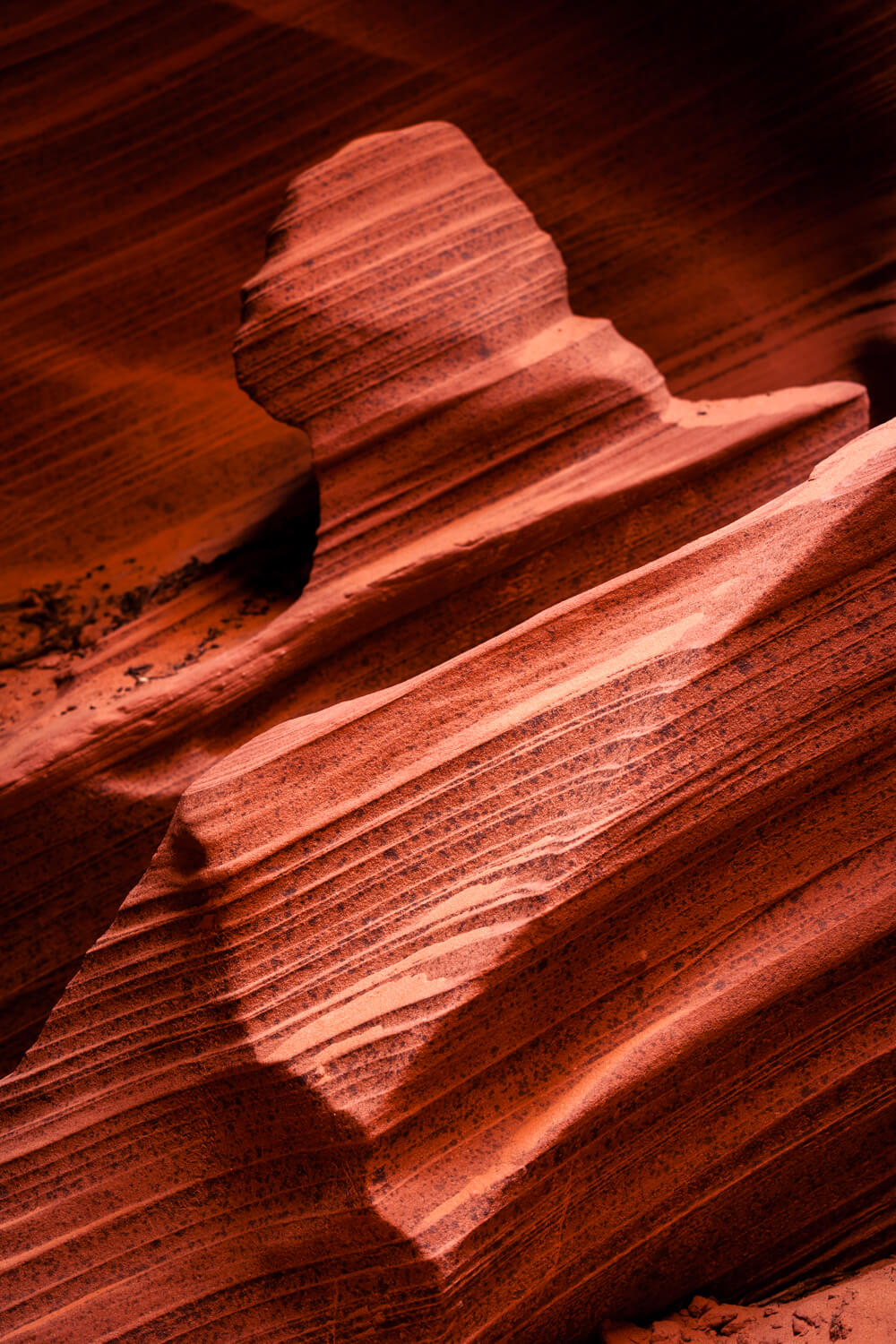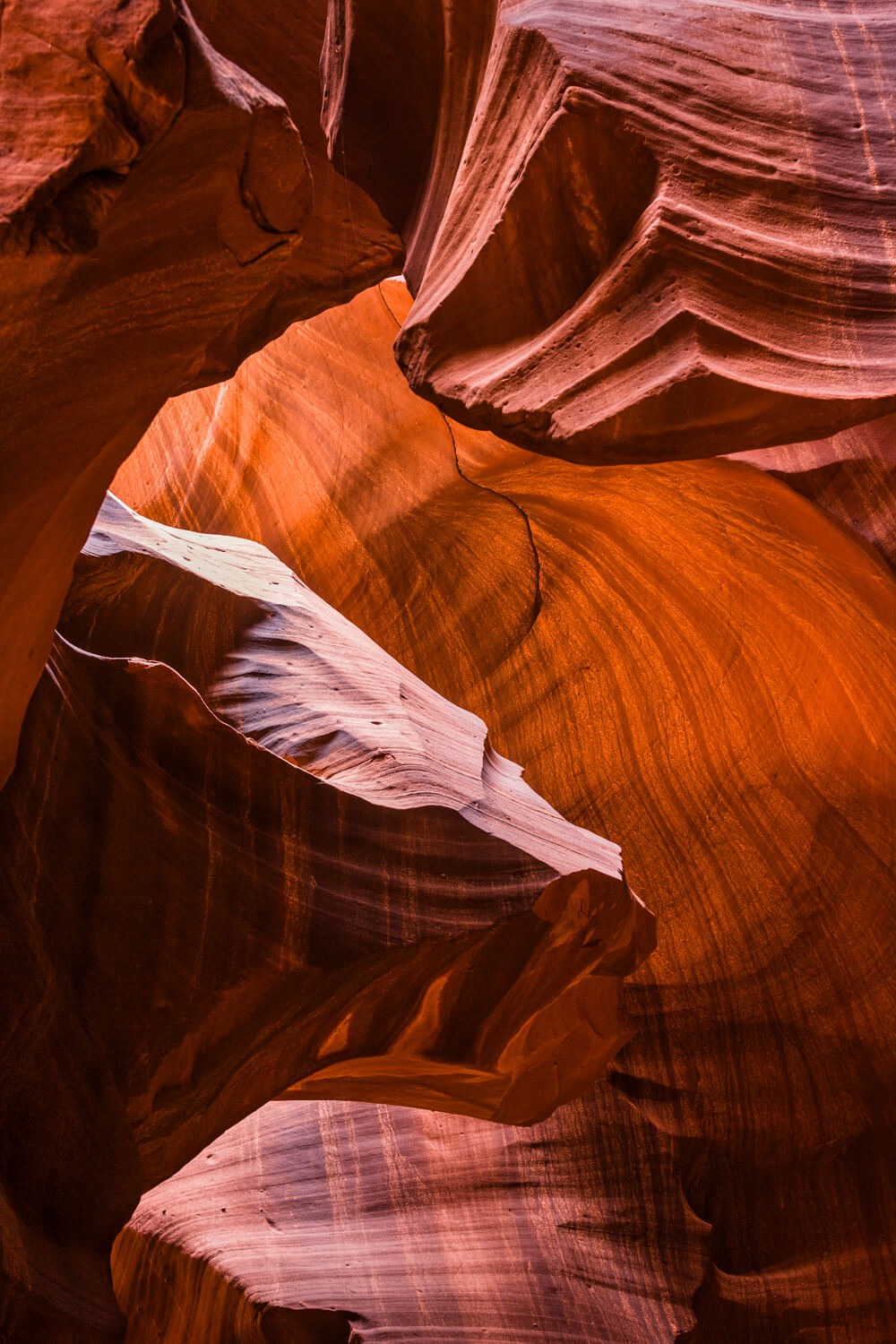Antelope Canyon, Arizona
Antelope Canyon, in the remote desert of northern Arizona, is one of nature’s most breathtaking creations. These narrow slot canyons carved by flash floods through red Navajo sandstone form a corridor of sculpted color and shadow.
The Navajo people consider Antelope Canyon a sacred place, and that reverence is unmistakable. There’s a stillness that invites silence, reflection, and reverence. It feels like stepping into a natural cathedral.
Photographing Antelope Canyon is not particularly challenging. In fact, it becomes quite special and almost effortless when you allow yourself to slow down and get into the rhythm of the space. Shapes emerge. Colors reveal themselves. Lines of sandstone begin to flow. The canyon teaches you how to see, not by force, but through attention. As you ease into that flow, you begin to mold those impressions into images, naturally and with a smile on your face.
I had an extraordinary experience here. A young Navajo guide named James arranged for me to have private time in the canyon early one morning, before the tourists arrived. As I began photographing in the silence of the slot canyons, James played his traditional flute. The melody echoed off the stone walls, filling the space with something deeply spiritual and moving. It was ethereal, otherworldly, yet rooted in something ancient and real. That moment,just light, stone, music, and grace remains one of the most profound of my travels.
Antelope Canyon is a photographic paradise, yes, but it’s also a space of spirit, shaped by time, water, and the culture that honors it. It simply invites you to listen and to see.



